During the war in Vietnam, artists were like reporters recording reality with their brushes. Their role became even more important when cameras were not available and working conditions were difficult.
On the occasion of the 50th anniversary of the great victory in the spring of 1975, a series of sketches and paintings by artist Huynh Phuong Dong - winner of the State Prize for Literature and Arts - were selected to be displayed in Hanoi and Ho Chi Minh City throughout this anniversary. His paintings are not only beautiful, but also have a strong impact on viewers from within and outside the country - those who were on the other side of the battle line.
Painting is a bridge to peace
Huynh Phuong Dong's real name is Huynh Cong Nhan, born in 1925 in Gia Dinh (now Ho Chi Minh City), died in 2015. He participated in revolutionary service in both the French and American resistance wars, especially the anti-American period.
From 1963 until the liberation day, the artist spent 12 years sketching all over the Southeast and Mekong Delta fronts. He drew large-scale scenes of wars, portraits of soldiers going to battle, and rear-area work, from quick sketches to complete works in terms of composition and color... each painting was realistic and full of life.
People's Artist Vuong Duy Bien - former Deputy Minister of Culture, Sports and Tourism commented: "Regardless of pencil, pen, watercolor or any other material... the emotions in Huynh Phuong Dong's paintings are always very abundant. It is a combination of the artist's talent with the reality of war."
"Binh Gia Battle" (above) and "La Nga" (below) - 2 of the 3 paintings that received the State Prize in 2007. (Photo: Vietnam Pictorial)
It was this talent that made Huynh Phuong Dong famous across borders. In 1987, an American veteran named David Thomas returned to Vietnam to heal the pain of war through painting. He was introduced to Huynh Phuong Dong - then Deputy Director of the Fine Arts Department in charge of the South, under the former Ministry of Culture and Information.
Looking at Mr. Dong's paintings, discussing them with him and going with him to old war zones, David Thomas respected the artist more and had more faith in his mission.
David Thomas and his wife at the 2023 exhibition in Hanoi (left) and the cover of a bilingual book of selected paintings by Huynh Phuong Dong.
Since 1990, David Thomas has become a familiar name in the art world in Vietnam. He founded the IAP fund, which specializes in supporting exchanges and residencies for artists from both countries, and organized many art exhibitions for artists from both countries, including many paintings by Huynh Phuong Dong and notably the three works that helped him receive the State Prize for Literature and Arts in 2007. These activities have received a lot of support from artists and citizens of both countries in general.
To honor Huynh Phuong Dong, also in 2007, David Thomas released a bilingual picture book of nearly 200 pages, selecting hundreds of outstanding works by the Vietnamese artist.
At the book launch, the American veteran shared: “I was very fascinated by Mr. Dong’s paintings. The paintings carry the ‘heat’ of an insider, refracted through the romantic eyes of a talented artist. Deep down, I am still proud to consider myself someone who understands his war. I have many relationships and have long considered him as my father.”
Huynh Phuong Dong's painting depicts Uncle Ho looking at his sketch. (Photo courtesy)
Later, Huynh Phuong Dong's paintings were also brought to many countries for exhibition such as China, the Soviet Union, Cuba, France...
In 2009, the artist also re-painted a photo that he particularly loved. It was a moment in the late 1960s, when paintings by liberation artists, including Huynh Phuong Dong, were sent to the North for an exhibition. The audience in the capital was very moved, and Uncle Ho also came to see and praise it. At that moment, photographer Dinh Dang Dinh took a photo of Uncle Ho pointing at a sketch by Huynh Phuong Dong.
Knowing this detail, he really liked it, so he painted it in oil on a large scale. The artist was even more proud when he heard that Uncle Ho had directed that the painting be exhibited in countries supporting Vietnam, so that everyone would know about the spirit of the Vietnamese people.
Behind every portrait is a life
Huynh Phuong Dong's exhibition has two parts: completed paintings and sketches (quick drawings, often in charcoal, without color). Each part leaves a deep impression, making viewers linger and admire the soul and spirit of the work for a long time.
As the author of the memoir “Huynh Phuong Dong - Wartime Colors,” journalist Nguyen Thi Dieu An (former Deputy Head of the Press Management Department, Hanoi Department of Culture) had the opportunity to meet and interact with the characters and stories behind the portraits.
In 2018, to complete the book, Ms. Dieu An followed the artist's family (wife, son, daughter-in-law) to visit many characters he had sketched. The group visited old battlefields, including Cu Chi to meet Ms. Bay Mo - a female guerrilla famous for sparing the lives of 4 American soldiers in 1968. Later, her bravery became the inspiration for the character Ba Huong in the movie "Tunnel: Sun in the Dark" which was released in early April 2025.
Mrs. Bay Mo (middle) during an audience exchange with the film "Tunnel: The Sun in the Dark" in Ho Chi Minh City, April 2025 and a drawing of her at the age of 17 was completed by the artist from a sketch. (Photo: Archive)
Ms. Dieu An recounted that during the meeting, Ms. Bay Mo was about 70 years old. Ms. Bay Mo's health was weaker than before, so she had to use a ventilator, but knowing that she was about to meet Mr. Dong's family, she felt excited and much healthier. The female guerrilla remembered clearly meeting the artist in 1965. He came with a group of cadres to film and take pictures, looking for typical characters to draw and record.
When Bay Mo was 17 years old, she saw the guests coming and immediately put down her gun and rolled up her pants. The artist told her to keep her posture while drawing. “After finishing the painting, he showed it to me, and everyone was amazed and praised the painting for being exactly the same. The painting was later printed in many copies, and it is said that Uncle Ba Dong also painted a large version of this painting as a gift for Mr. Vo Van Kiet when he was the Secretary of the Ho Chi Minh City Party Committee,” Ms. Mo recounted.
Mrs. Bay Mo loved Uncle Ba Dong very much and was grateful for the drawing, saying that thanks to it, her parents later agreed to let her join the guerrillas (before that, she had only gone secretly). The picture was also considered a souvenir to record her youth.
“I thank you very much, Uncle Ba. Thanks to you, I have a picture of me at 17 years old, I was very popular with girls back then but now I have to use a ventilator. Uncle Ba is very brave, he followed the guerrillas into fierce areas. Because he went, he saw and heard with his own eyes, so he was able to paint,” Mrs. Bay Mo emotionally told the artist’s family.
Journalist Dieu An, author of the memoir "Huynh Phuong Dong: Wartime Colors." (Photo: Minh Anh/Vietnam+)
Due to the chaos of war, many martyrs died but their families did not have photos to worship. Therefore, sketches of battlefield portraits became even more valuable. Ms. Dieu An also told the story of martyr Ba Cuong (Nguyen Van Cuong) in Tien Giang, who died in 1968 during the Tet Offensive. At that time, Ba Cuong was only 24 years old, had a wife and children.
The house has 5 martyrs, on the altar there are 5 incense bowls but only Ba Cuong has a picture. That is the sketch that Mr. Dong drew when he was on a business trip to Tien Giang in 1964. Here he sketched portraits of guerrillas in Cu Lao Thoi Son, including the commune team leader Nguyen Van Cuong.
Due to the hasty move, the painter had to take the series of paintings with him immediately. It was not until after the liberation that the battlefield artists, including Ba Dong, organized an exhibition of their paintings, and visitors who came to see them recognized the husband of the team leader Ba Cuong. This person then coordinated with the provincial party committee to present the paintings to the family.
Author Dieu An also said that after the war, Mr. Dong's family visited Ba Cuong's family many times, even after the artist passed away. On one trip, Mr. Dong went with him and directly gave another painting of Ba Cuong to replace the old one that was eaten by termites. On another trip, his family contributed some money on his behalf to support his life. On each trip, the two families were friendly and very close.
Journalist and researcher Tran Bach Dang (1926-2007) once commented that Huynh Phuong Dong had a quick approach to people and events, but emphasized that it was not superficial: "It seems that he was afraid of missing this story, that story, this character, that character, to make mistakes with the great sacrifices of his compatriots, comrades, to miss out on villages, houses, fields... everything that grows in his homeland."
Some paintings by artist Huynh Phuong Dong:
Sketch "Sac Forest War Zone, South Saigon"
Painting "Hidden meeting in the war zone"
Artist sketches "Battle south of Y-shaped bridge."
Painting "People in Wartime."
Painting "Army Festival."
Artist Huynh Phuong Dong belonged to the generation of Southern youth who gathered in the North in 1954. He married physician Le Thi Thu in 1957 and had three children, two of whom were born before he left for B in 1963. Phuong Dong was the name he took from the Soviet ship Vostok 1 for his second son, and was also the name he used for his revolutionary activities later.
In 1973, Mrs. Thu was trained to become a doctor. With peace of mind that her two children were well taken care of at a school for students in the South, she went on a mission to B and reunited with her husband at the Tay Ninh base after 10 years apart. During those 10 years, Dr. Thu said her husband still missed his family and sent hundreds of love letters to his wife.
Artist couple Huynh Phuong Dong and Le Thi Thu on a trip to the old battlefield. (Photo: Facebook Hoa Si Dong)
In 1975, when peace was restored, the whole family was happily reunited and returned to live in Ho Chi Minh City. Here, artist Huynh Phuong Dong continued to devote himself to his painting career until the last days of his life.
During his 70-year painting career, Mr. Huynh Phuong Dong was awarded the State Prize for Literature and Arts in 2007, 2 Resistance Medals, 5 Medals for Fine Arts Activities and 3 noble awards at exhibitions.
(Vietnam+)
Source: https://www.vietnamplus.vn/hoa-sy-huynh-phuong-dong-va-nhung-buc-ve-noi-chien-tranh-voi-hoa-binh-post1033278.vnp



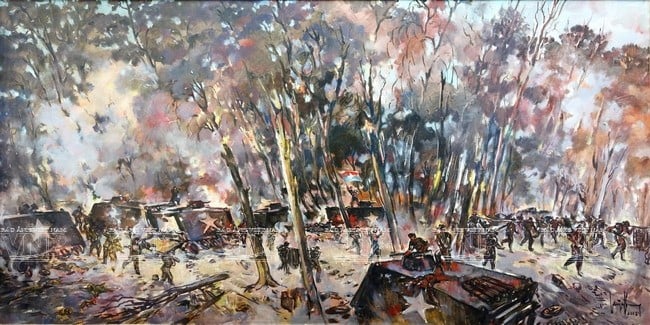
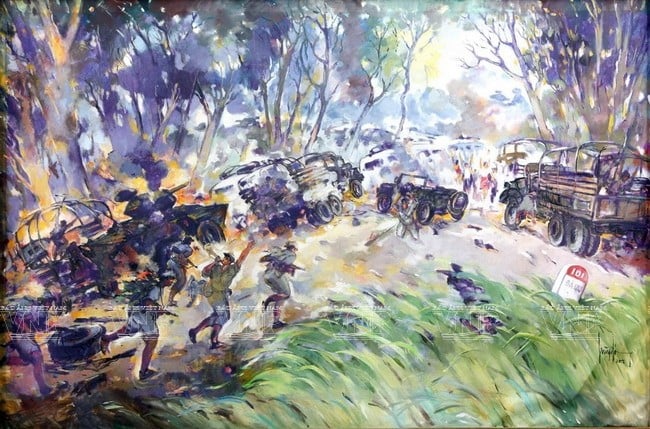

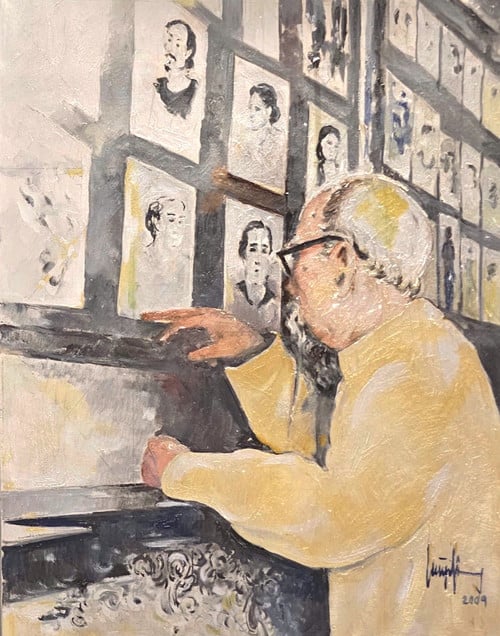
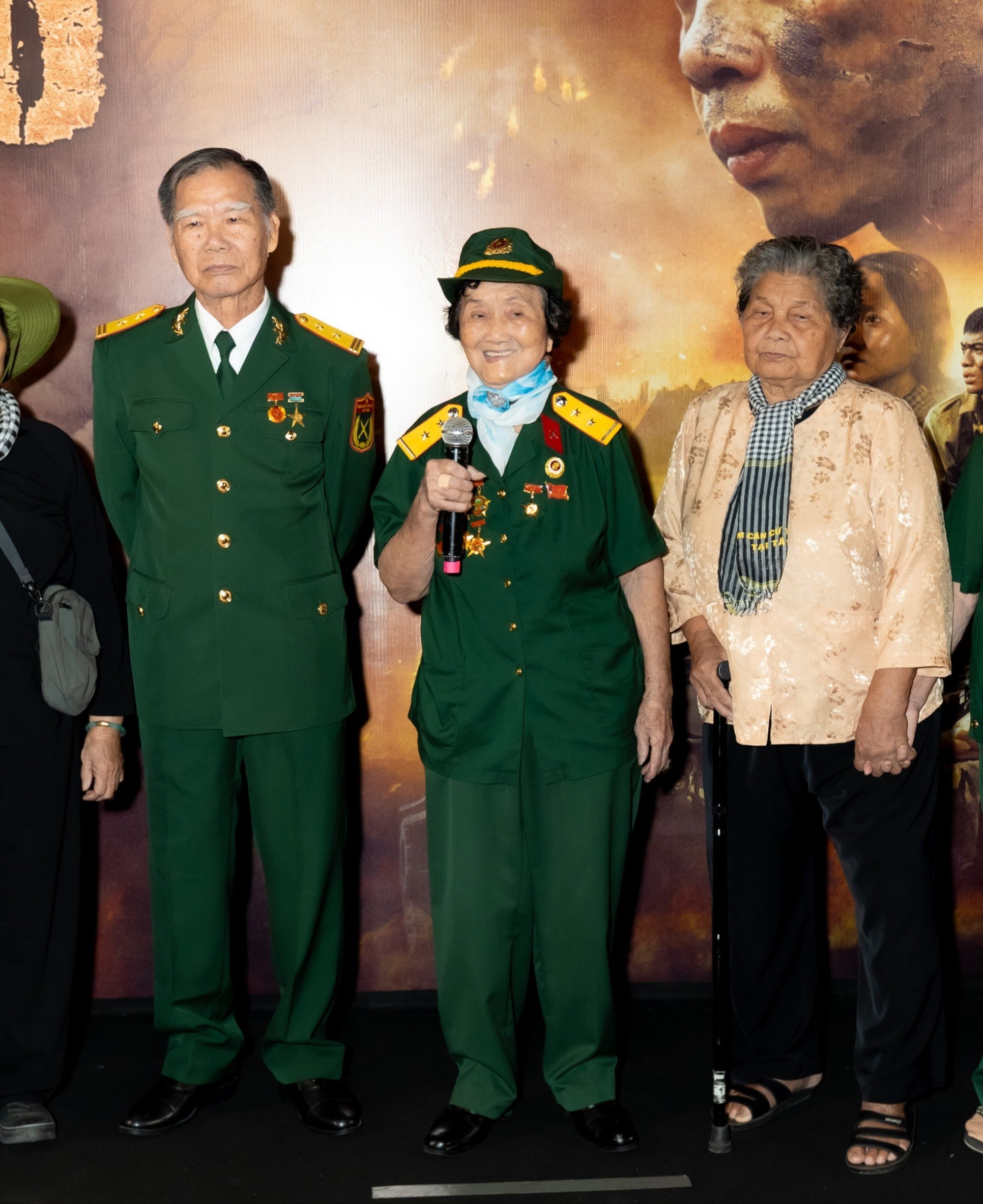
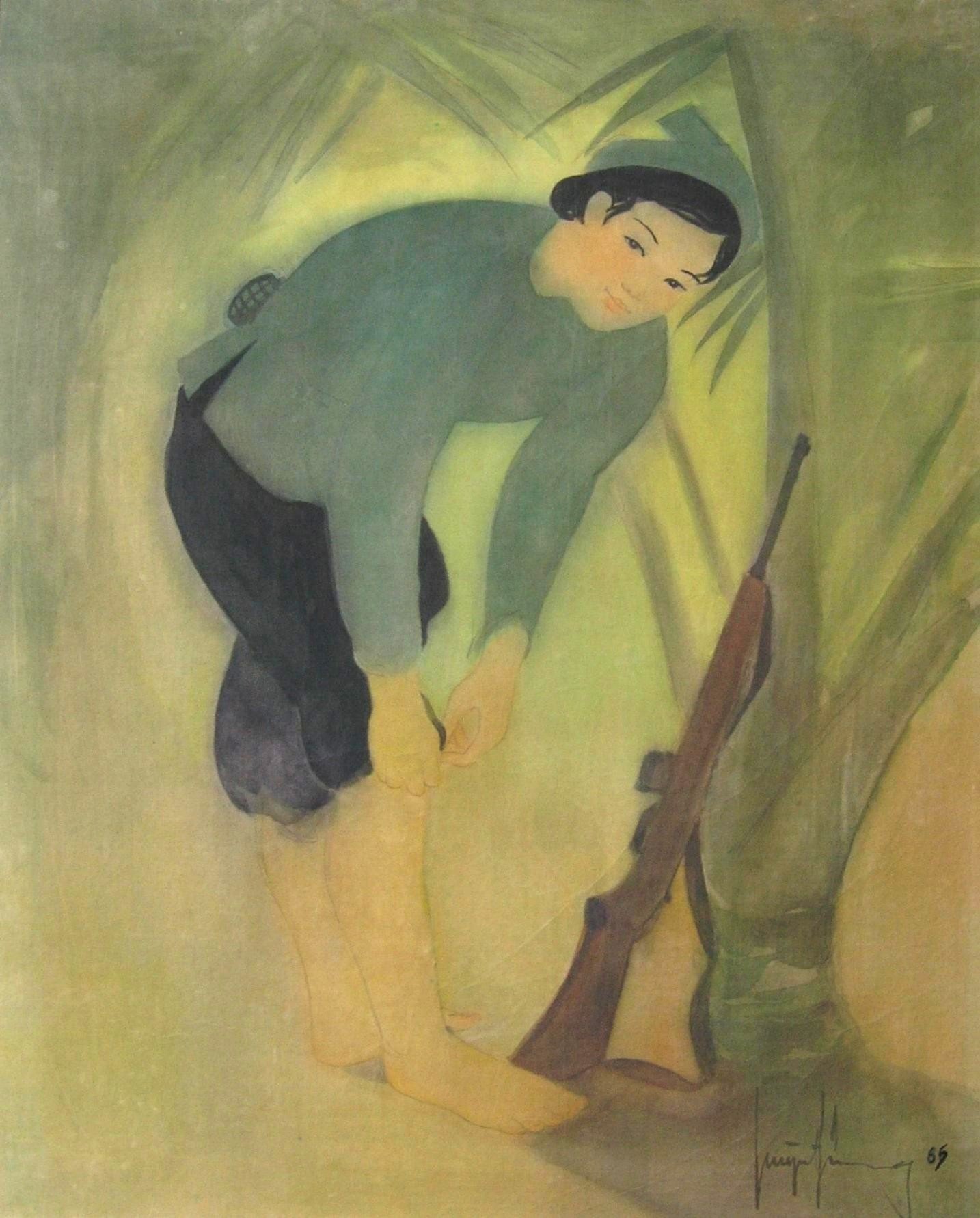
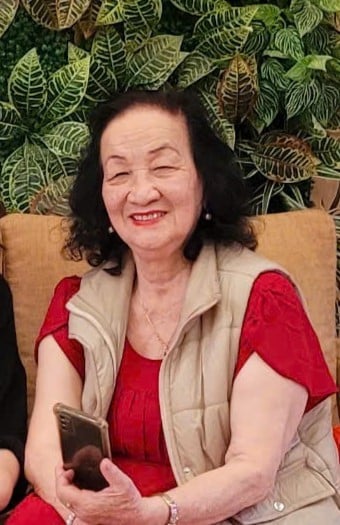
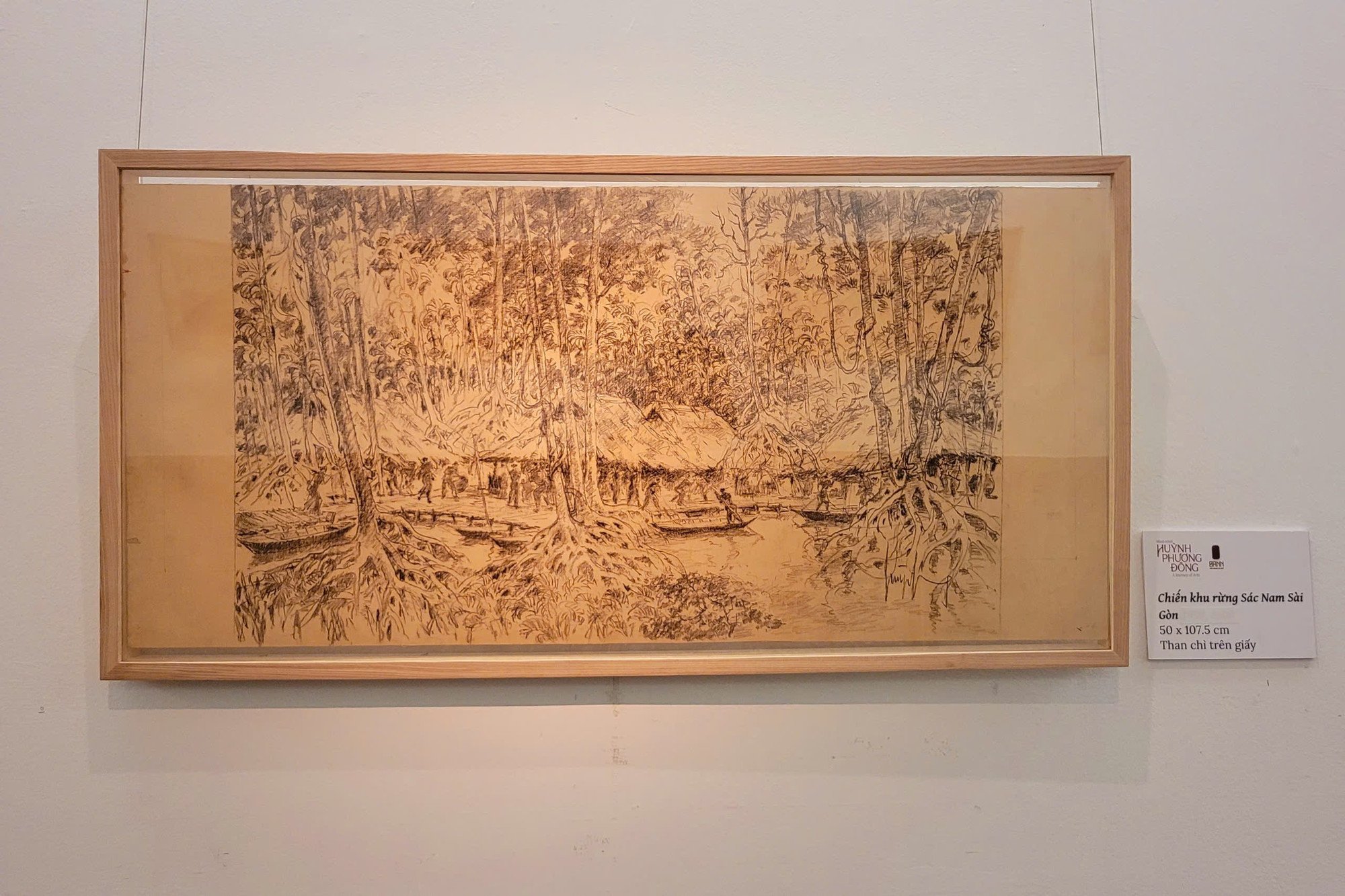
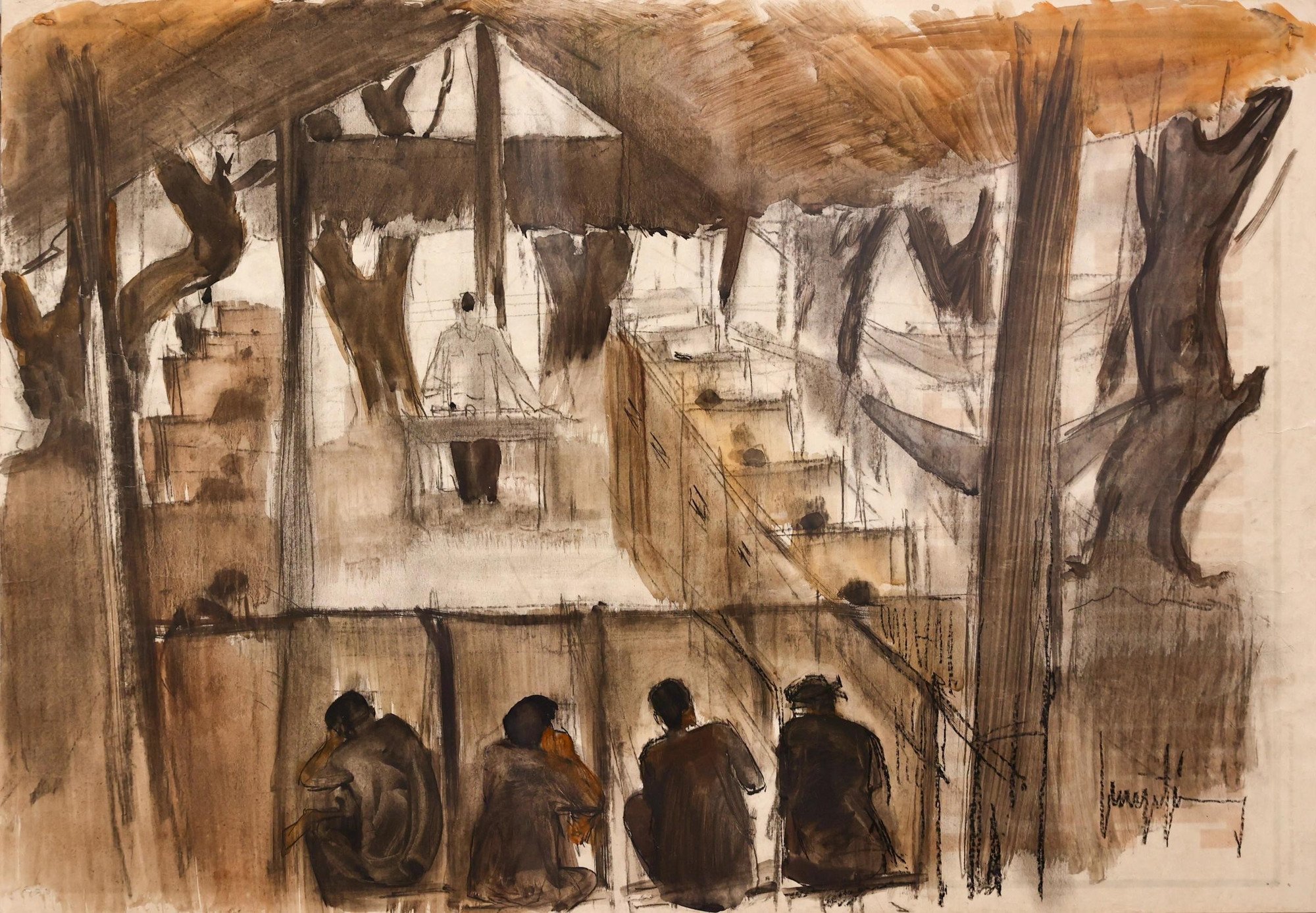
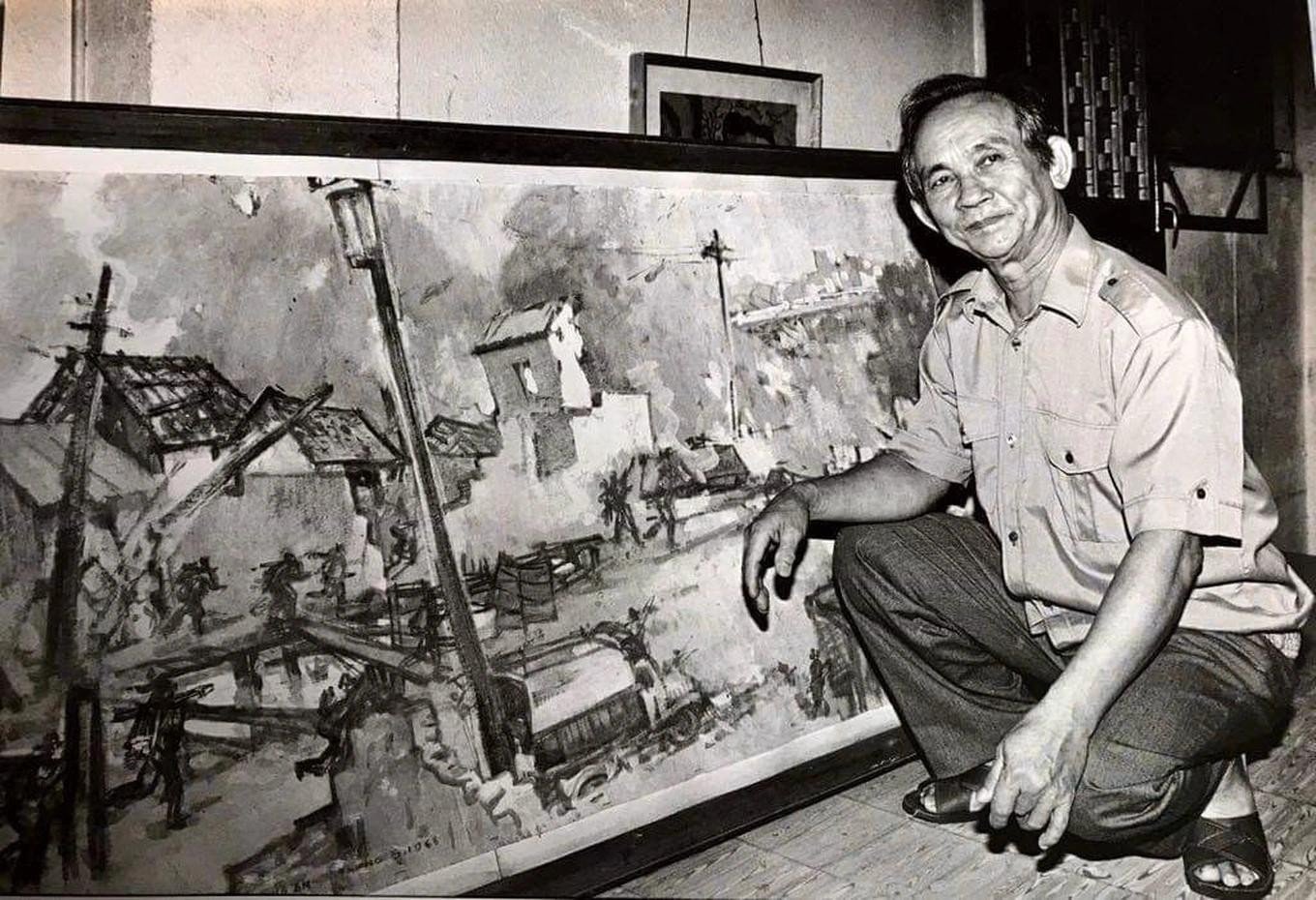
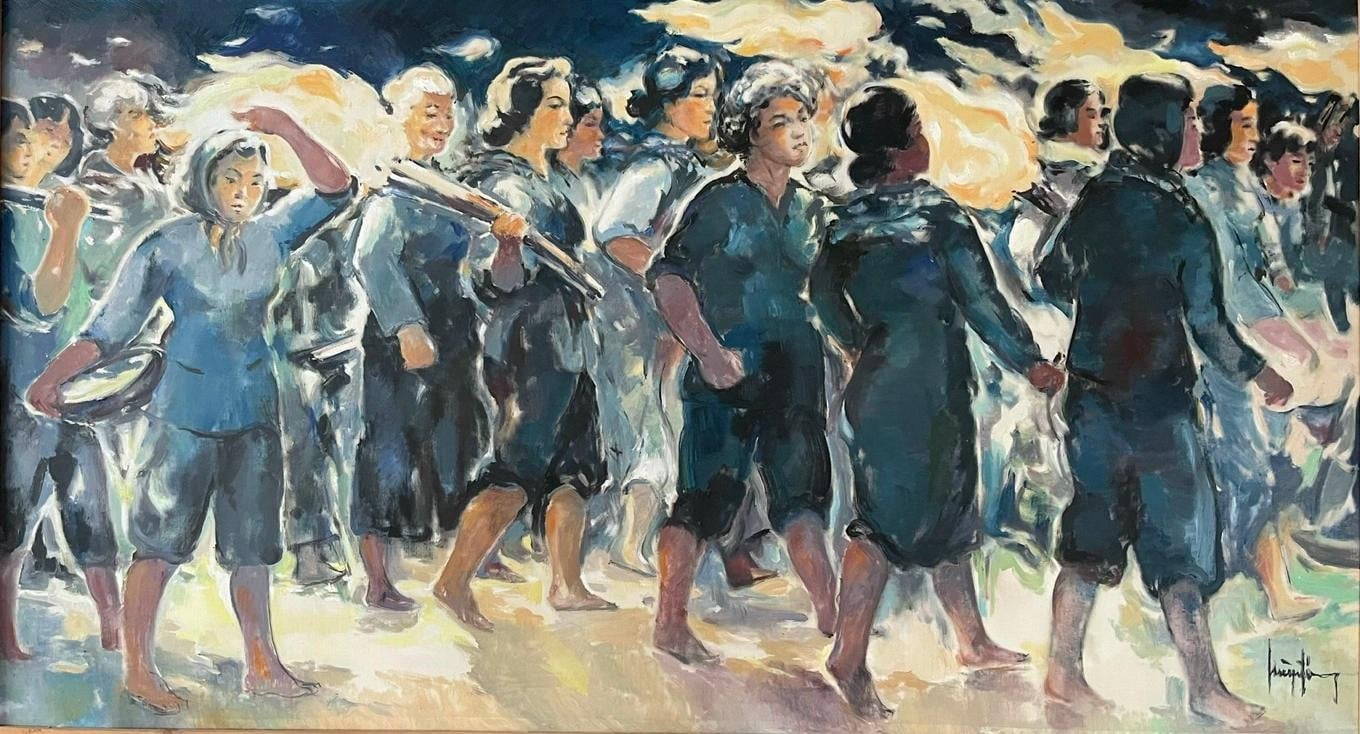
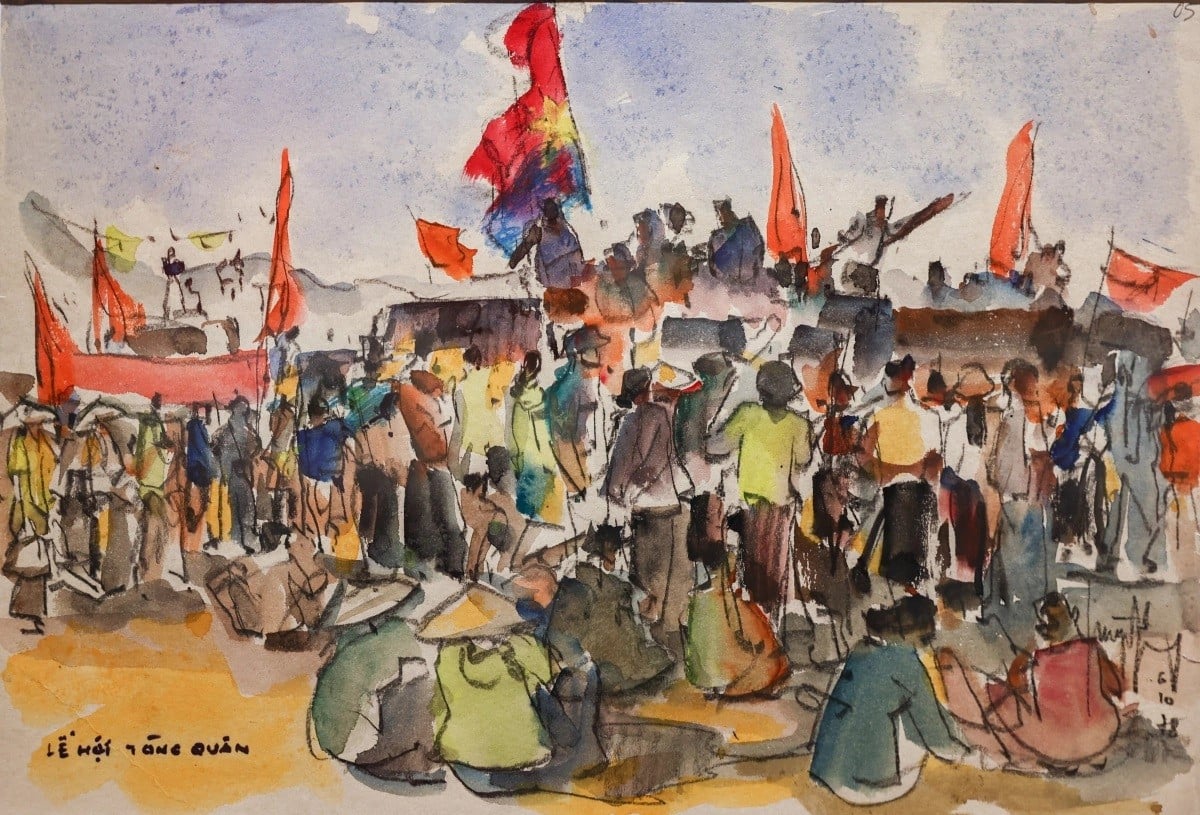
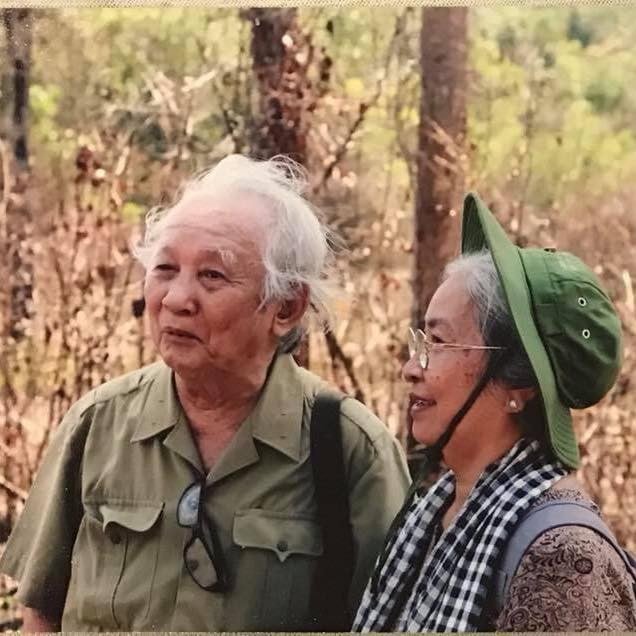
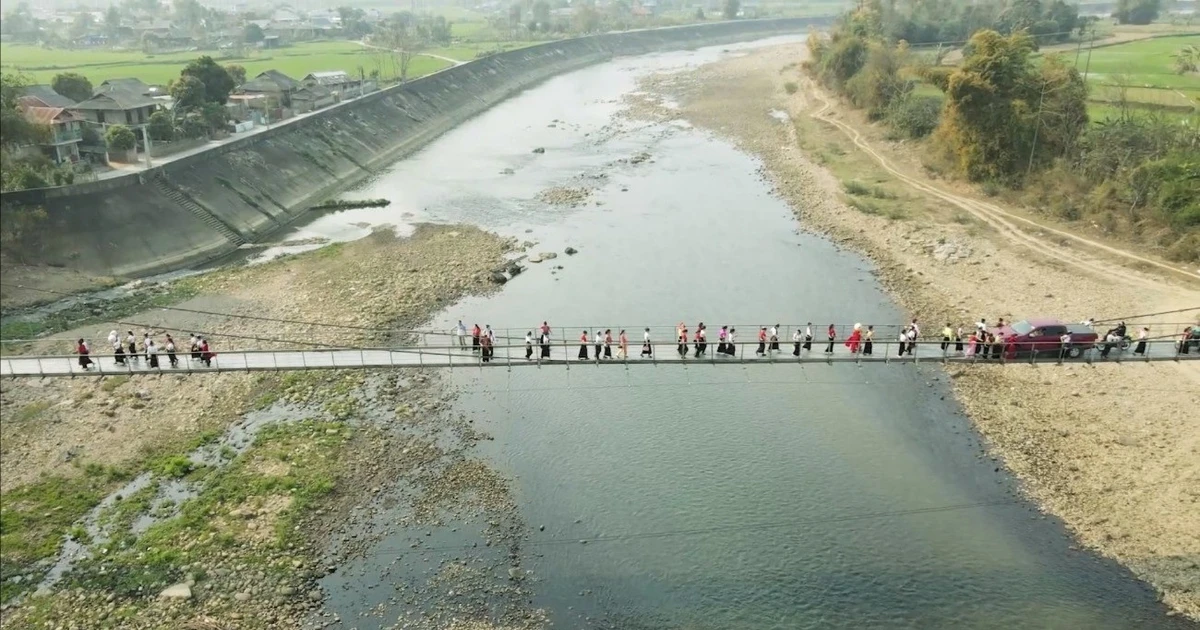

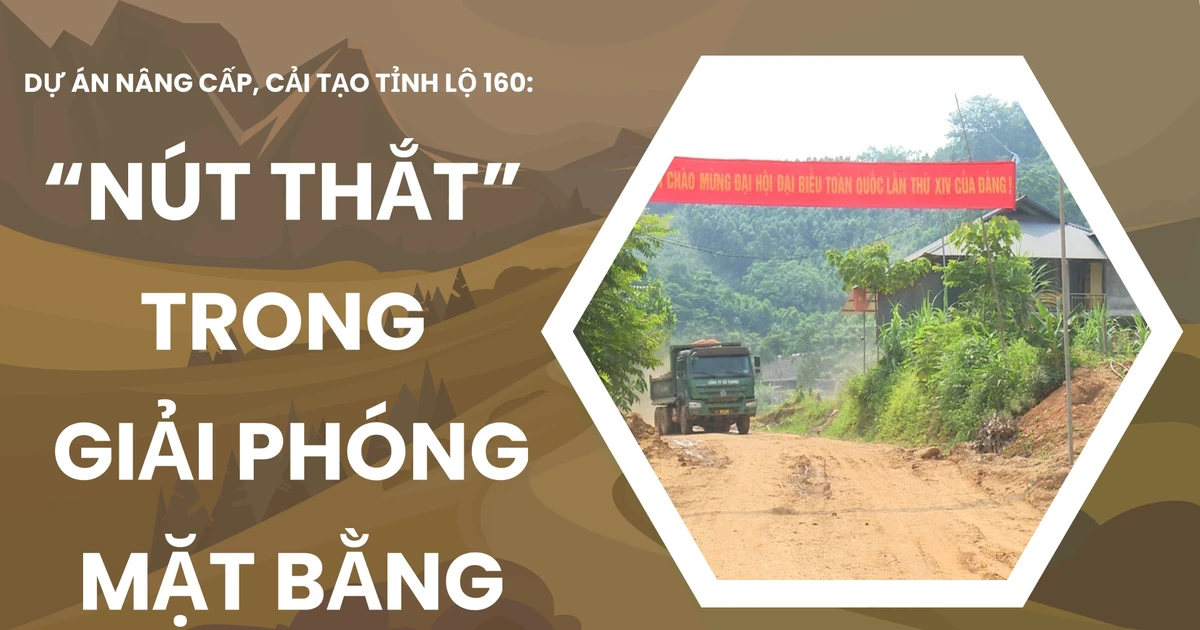
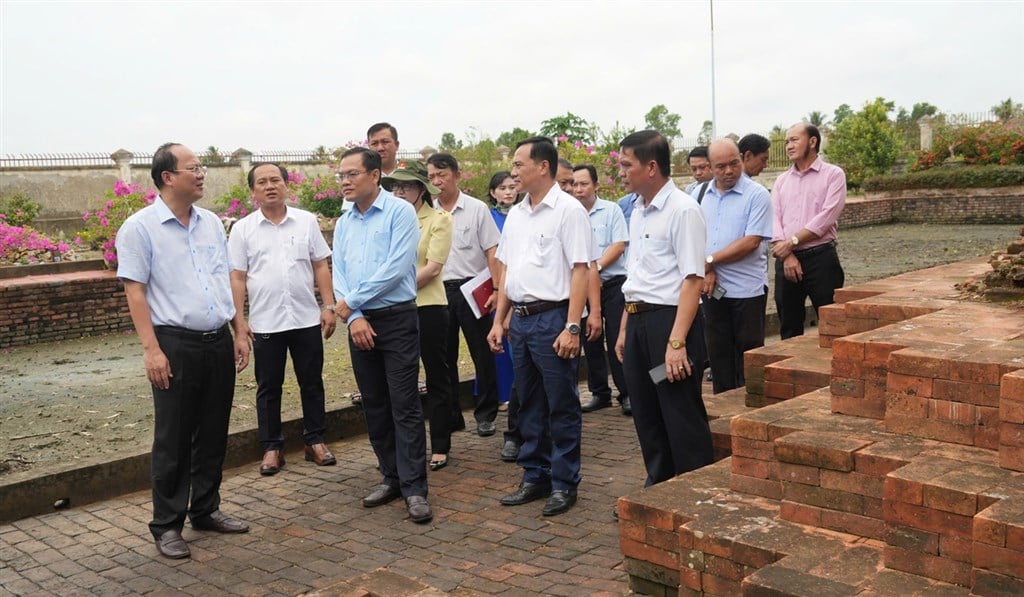


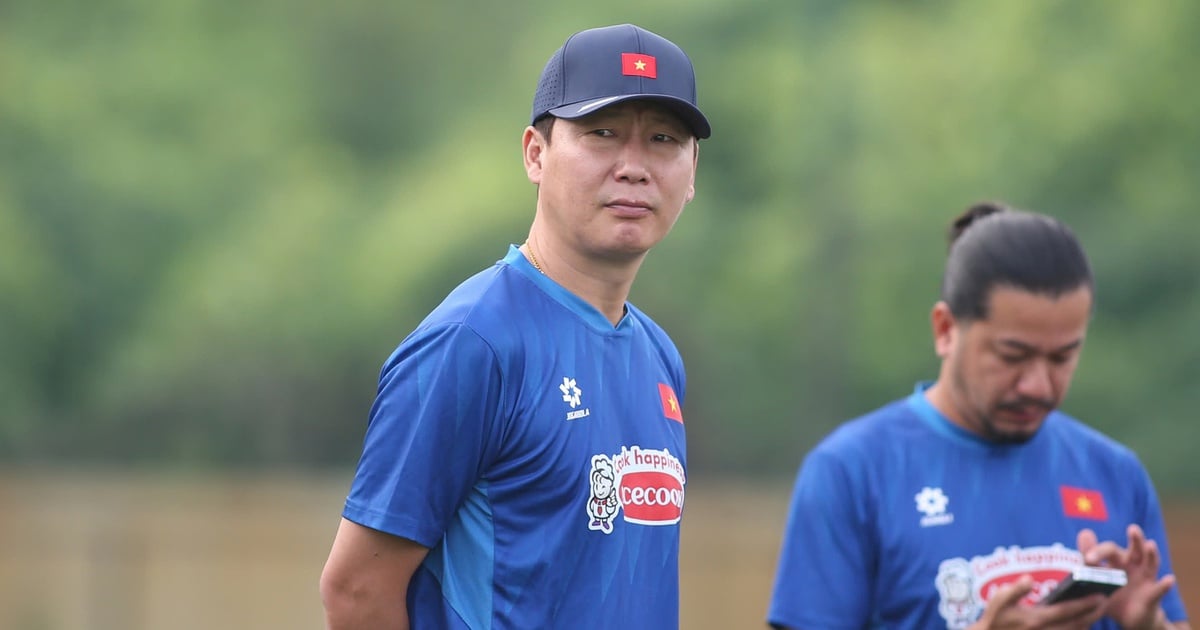
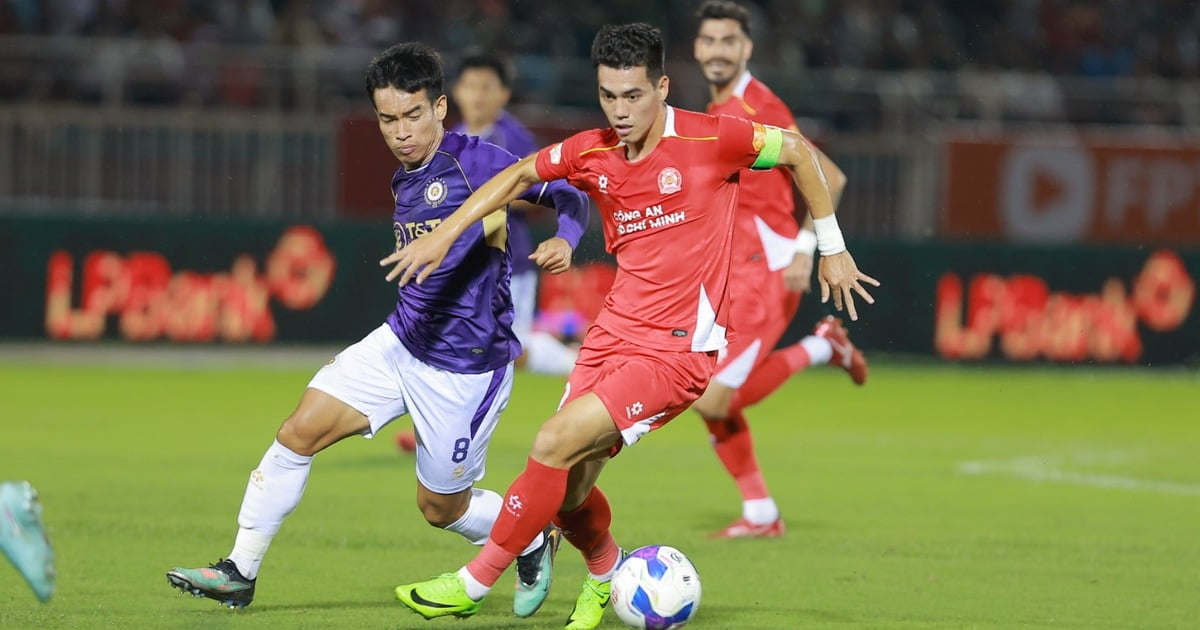
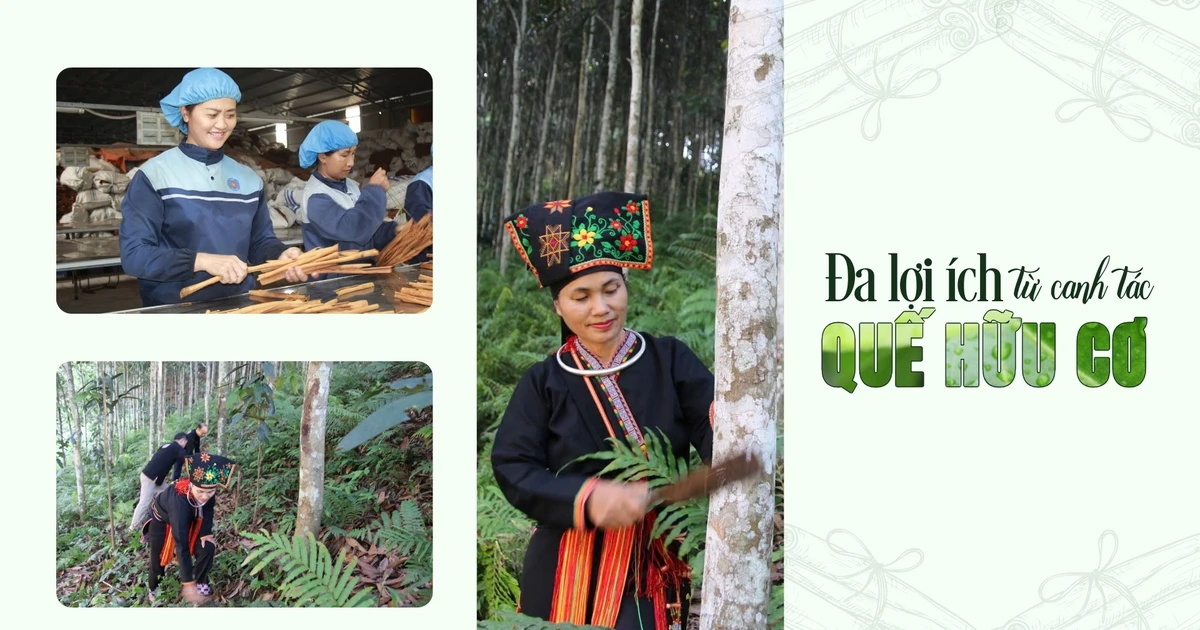
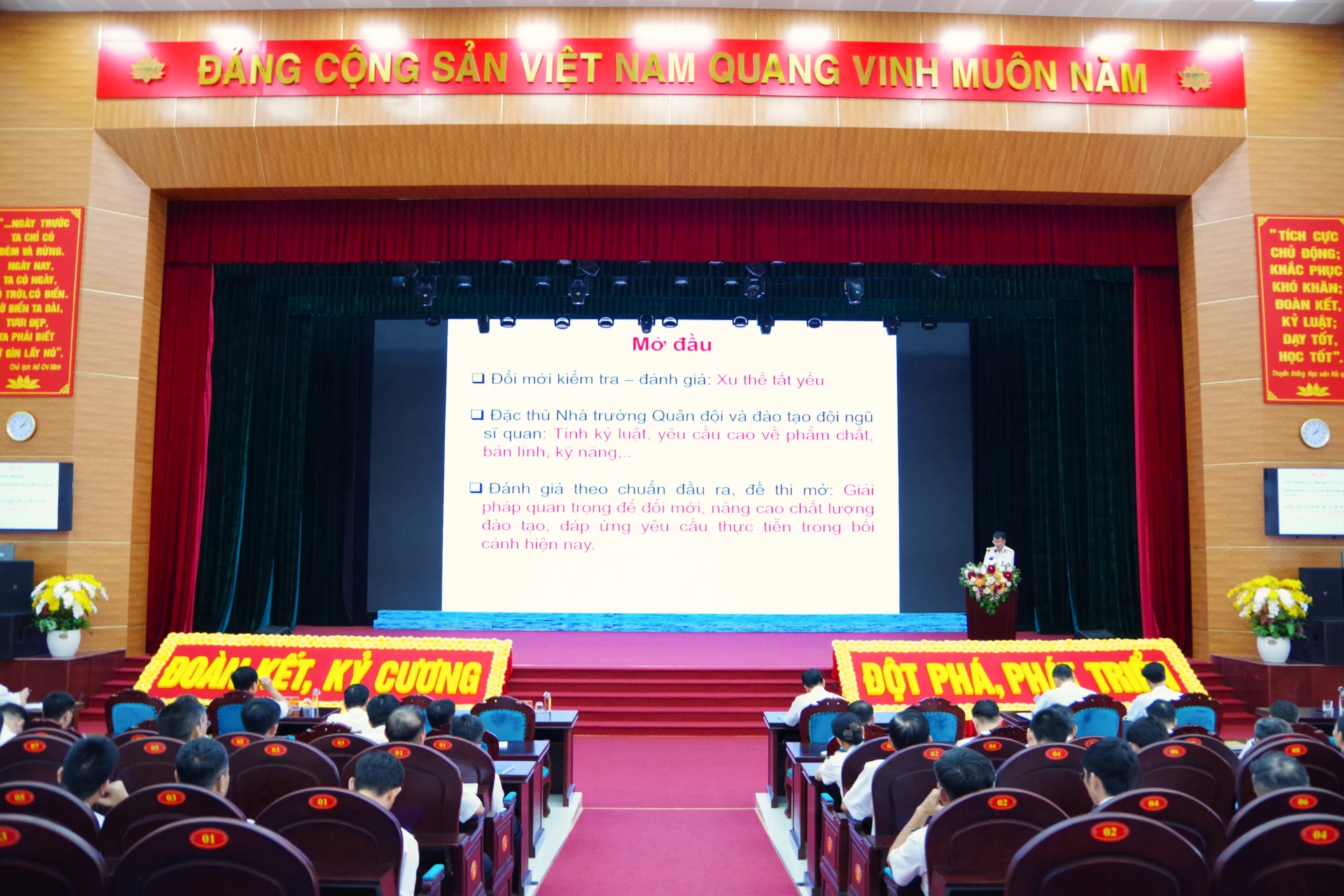

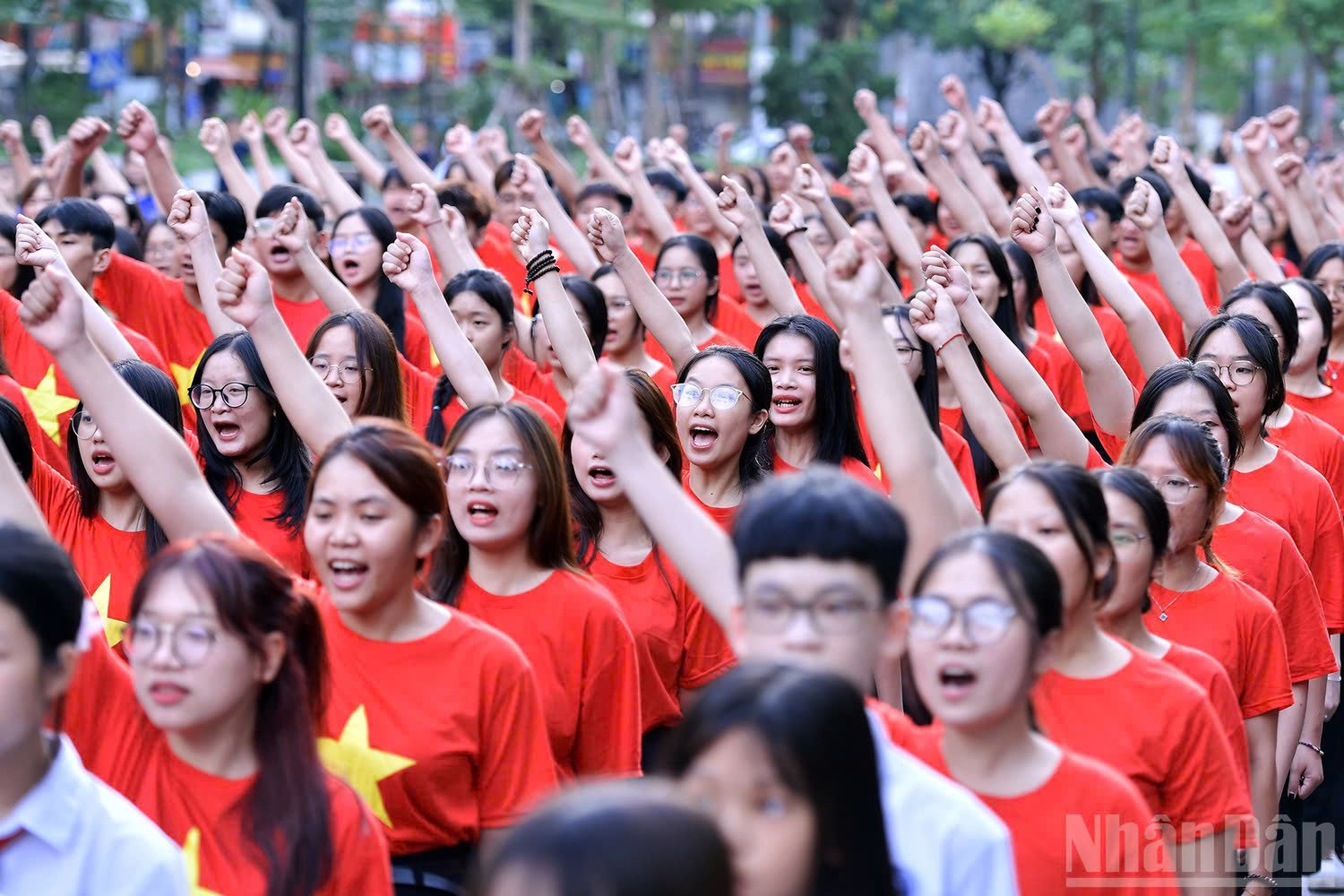
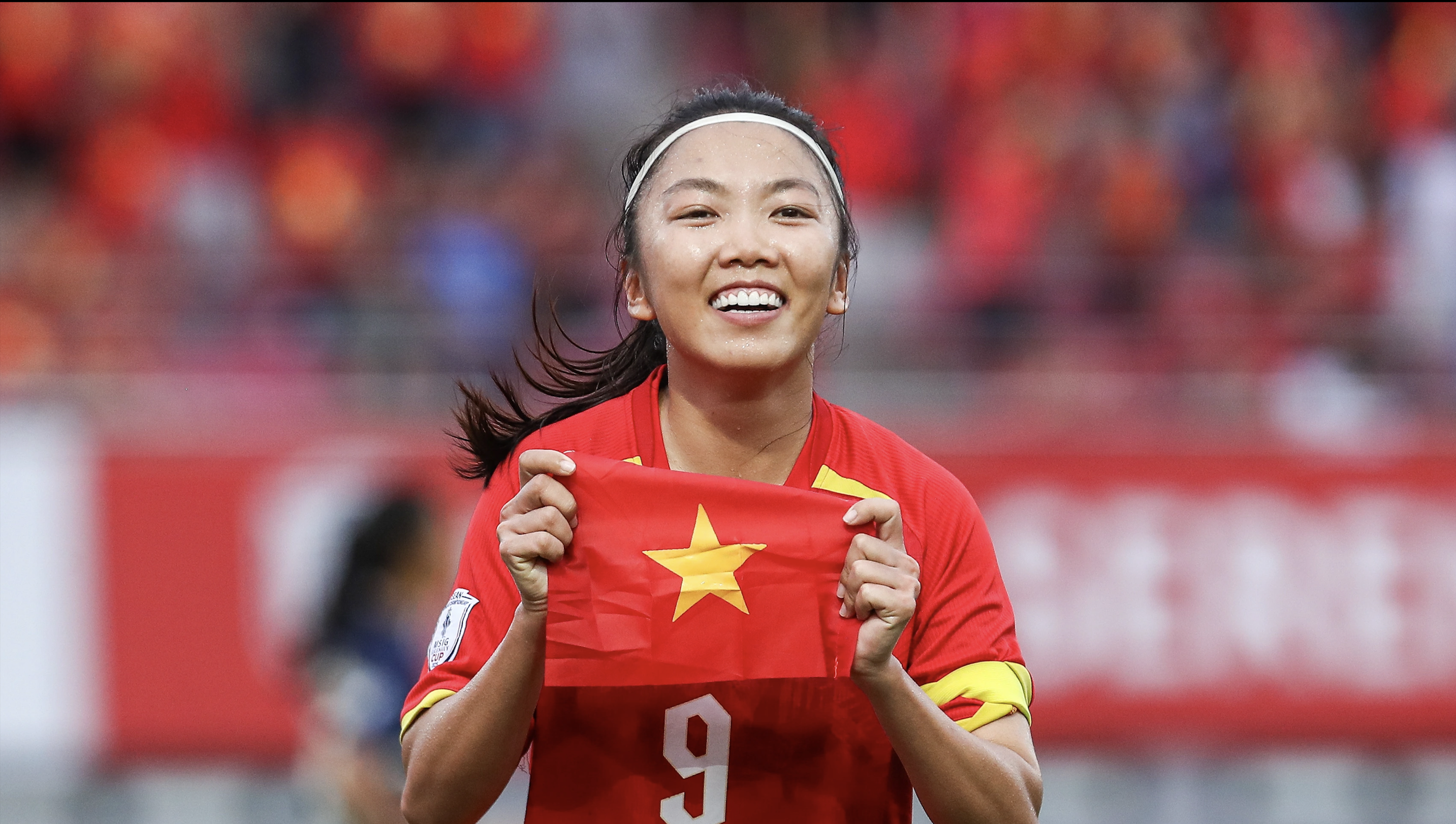
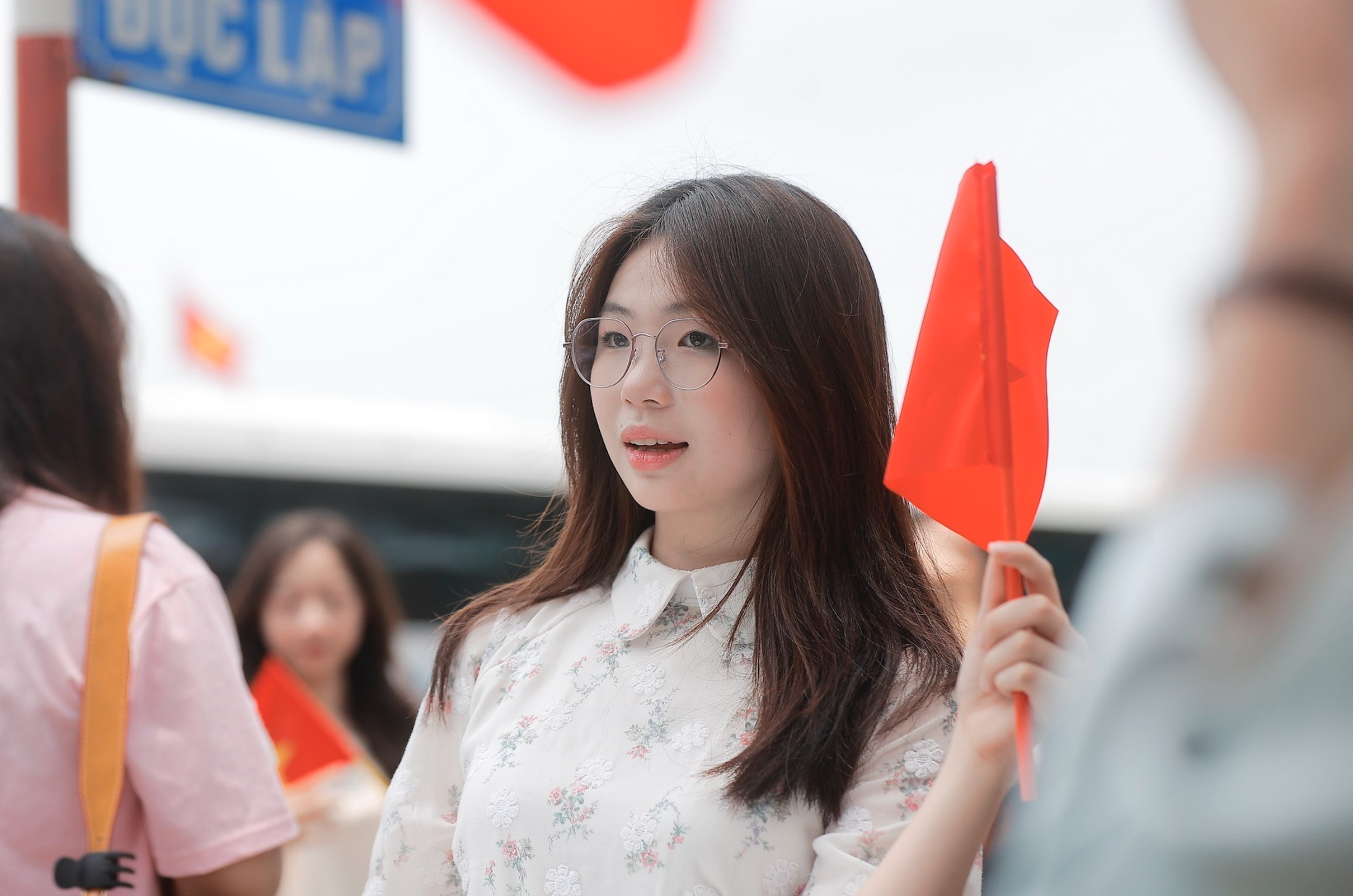
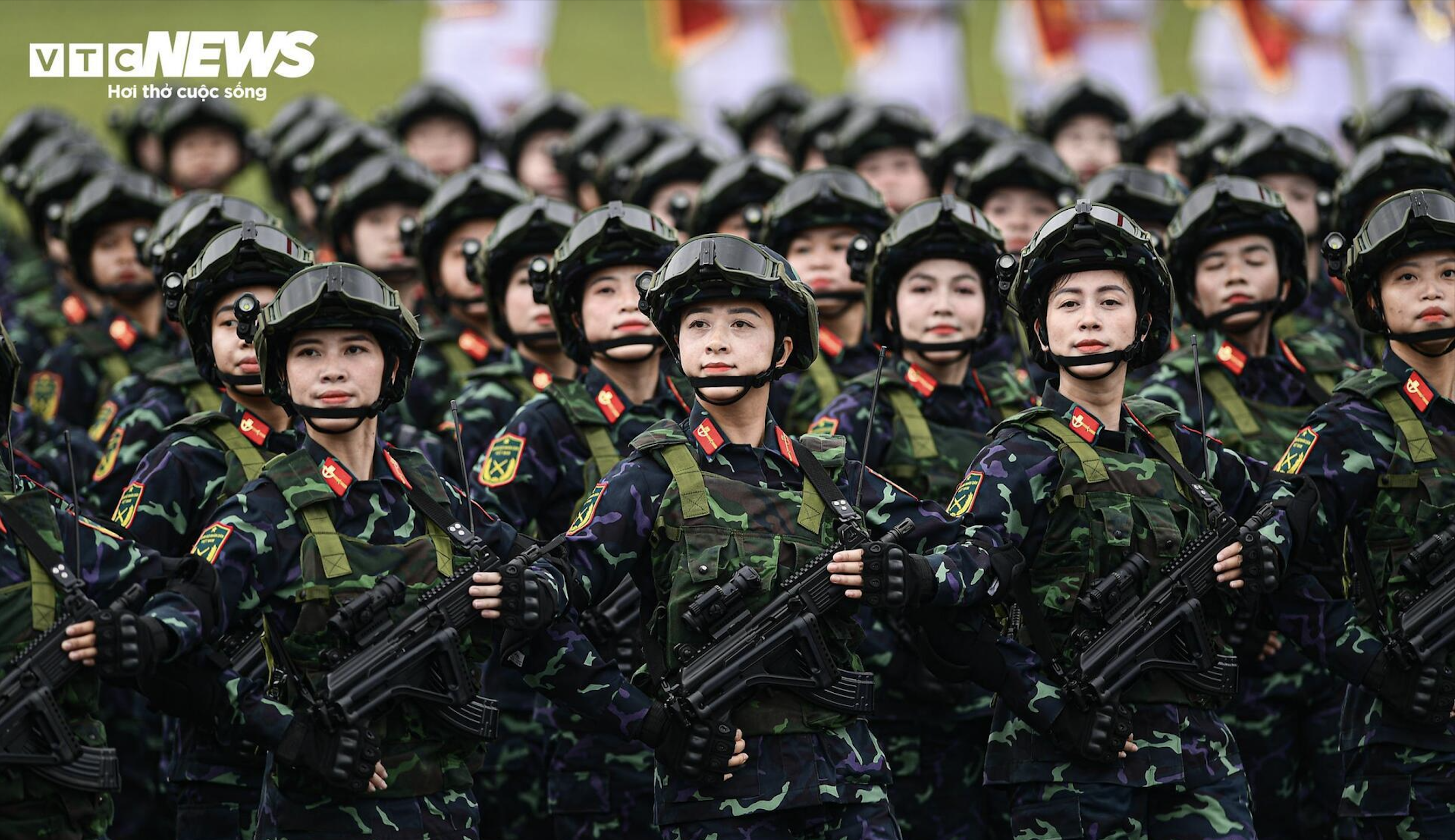
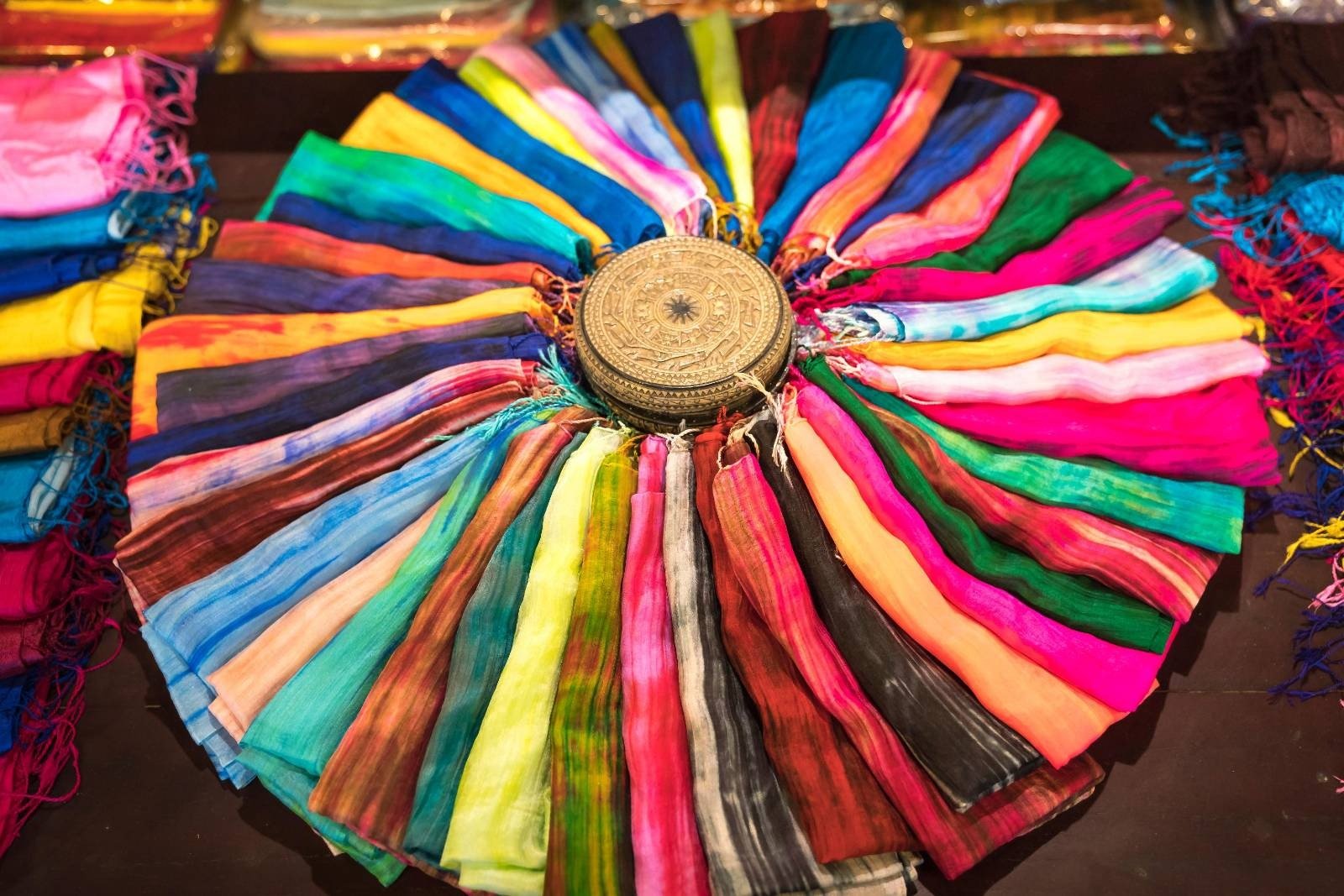


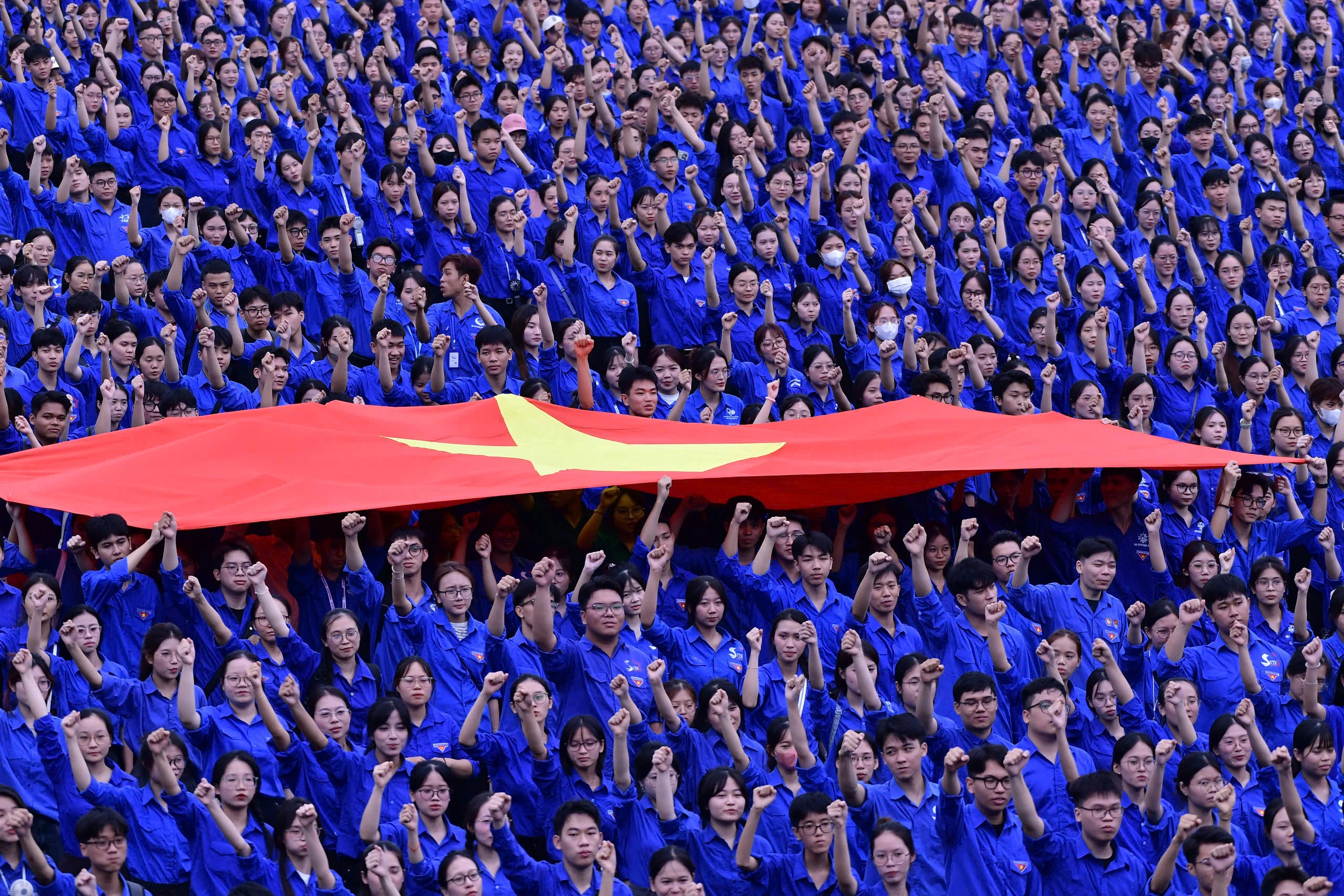
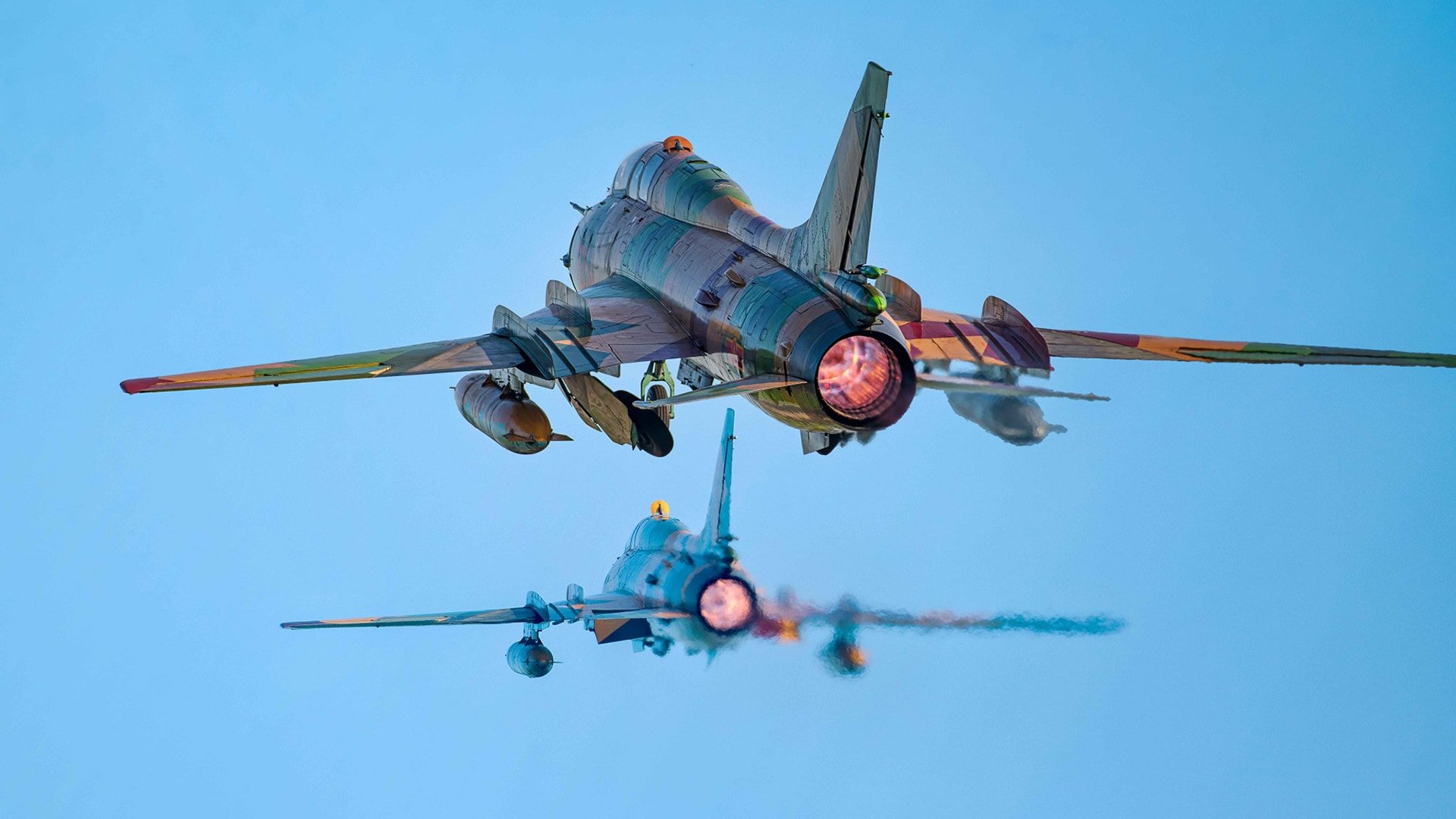
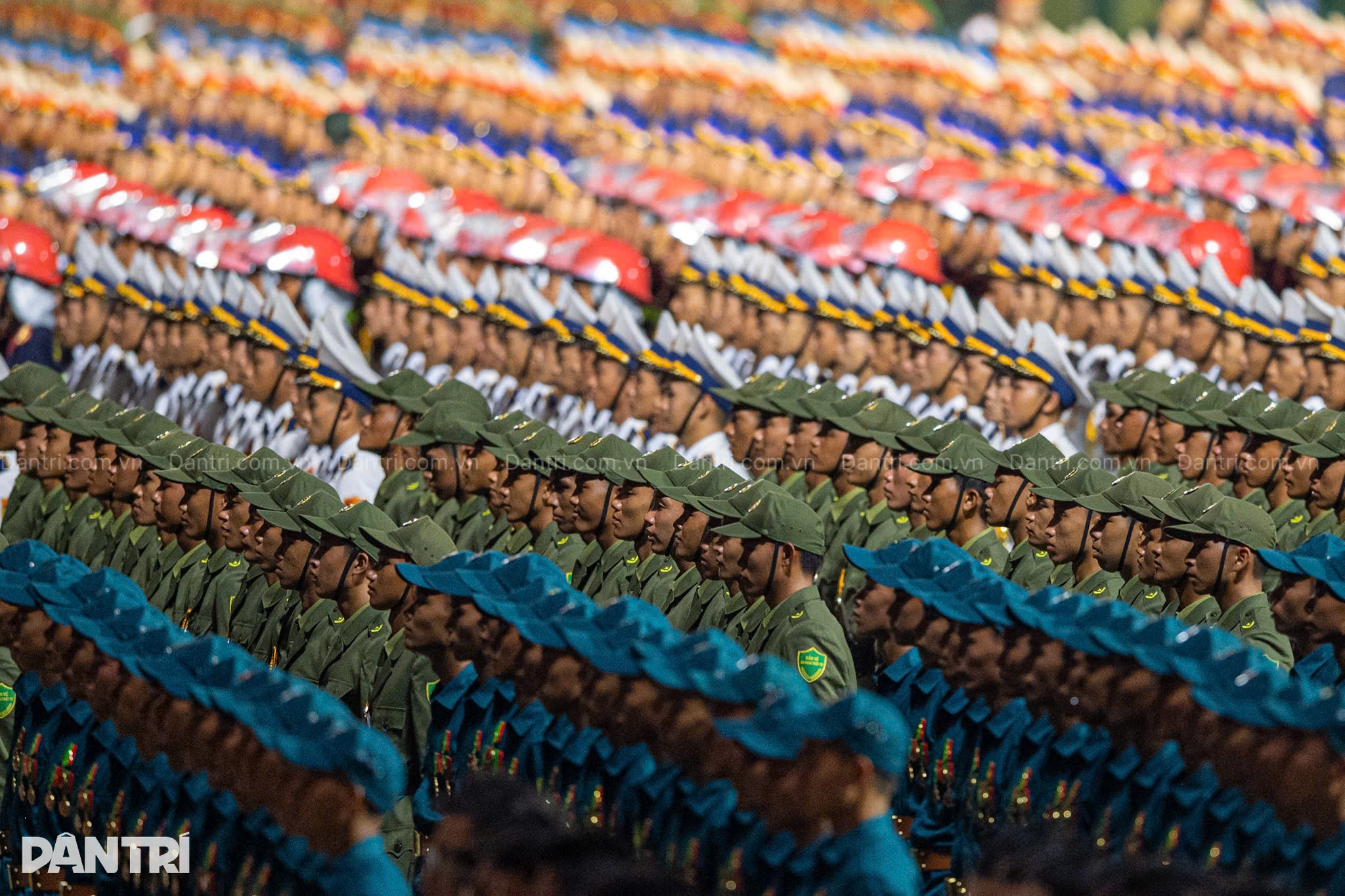
![[Photo] An Phu intersection project connecting Ho Chi Minh City-Long Thanh-Dau Giay expressway behind schedule](https://vstatic.vietnam.vn/vietnam/resource/IMAGE/2025/8/21/1ad80e9dd8944150bb72e6c49ecc7e08)
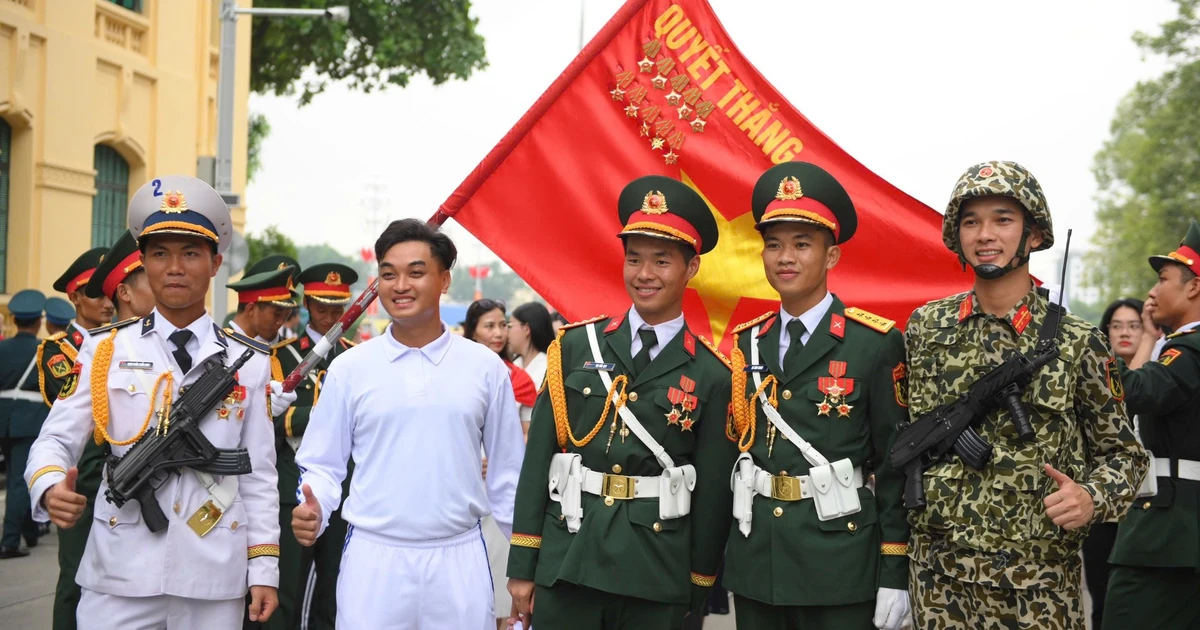
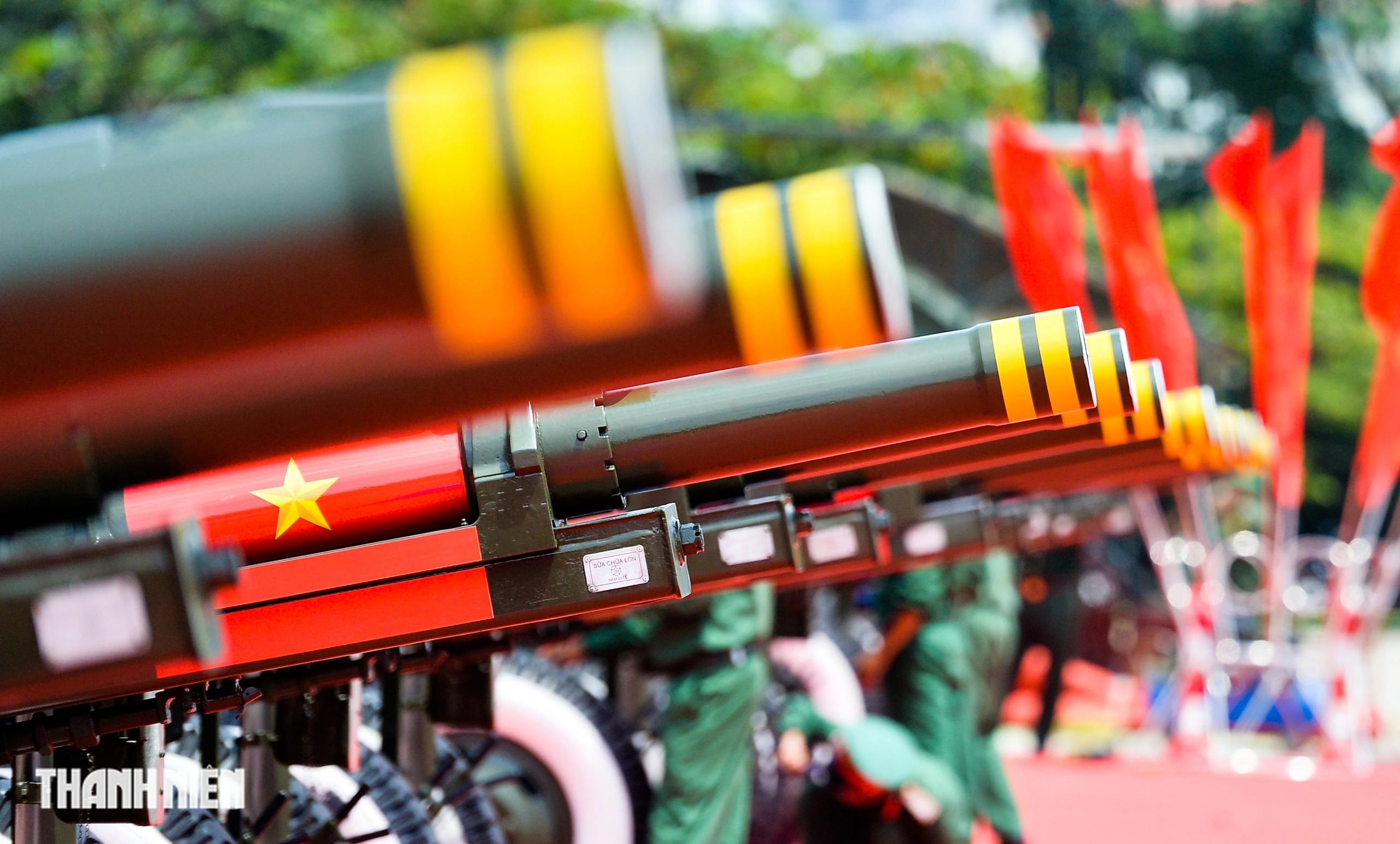
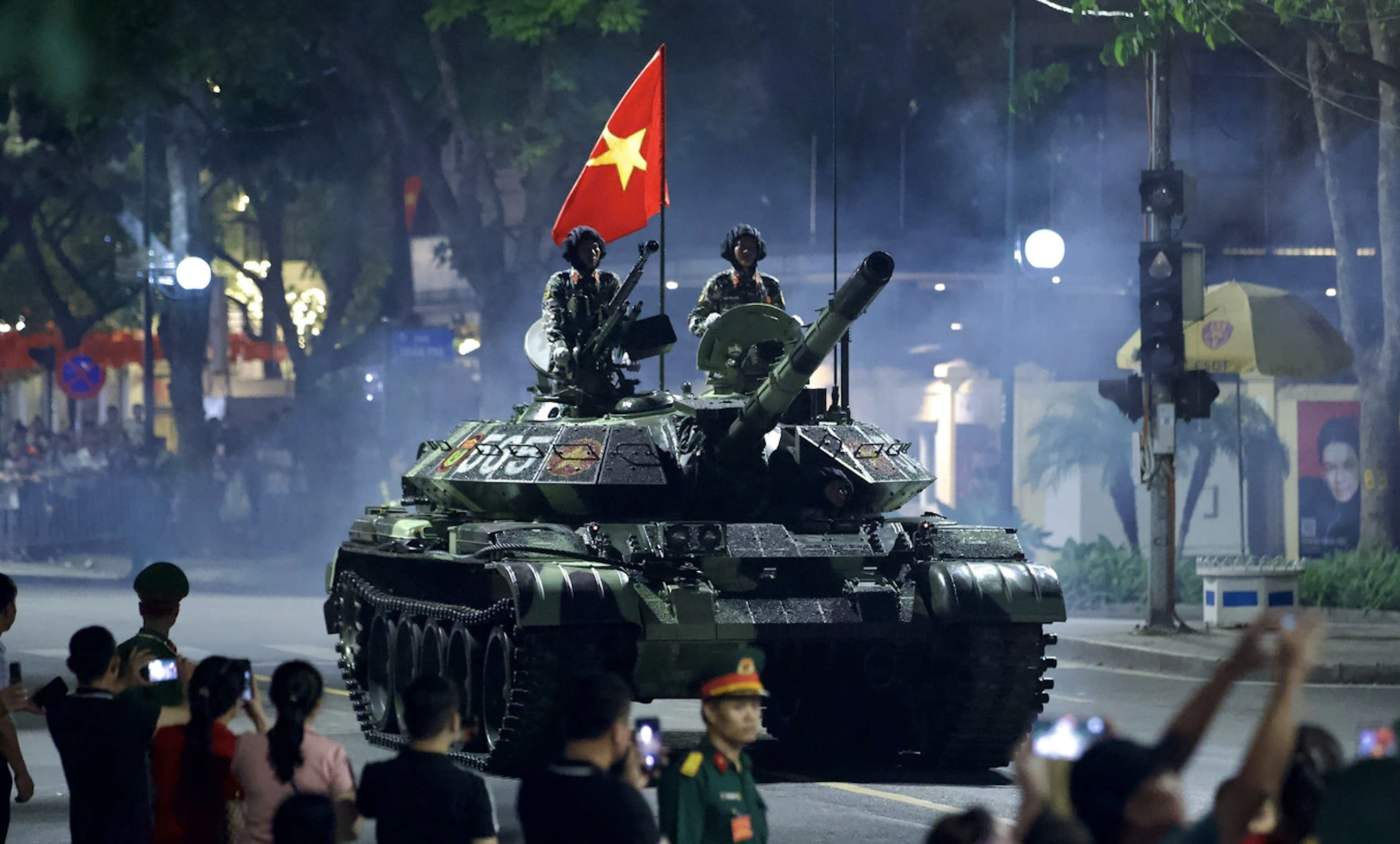
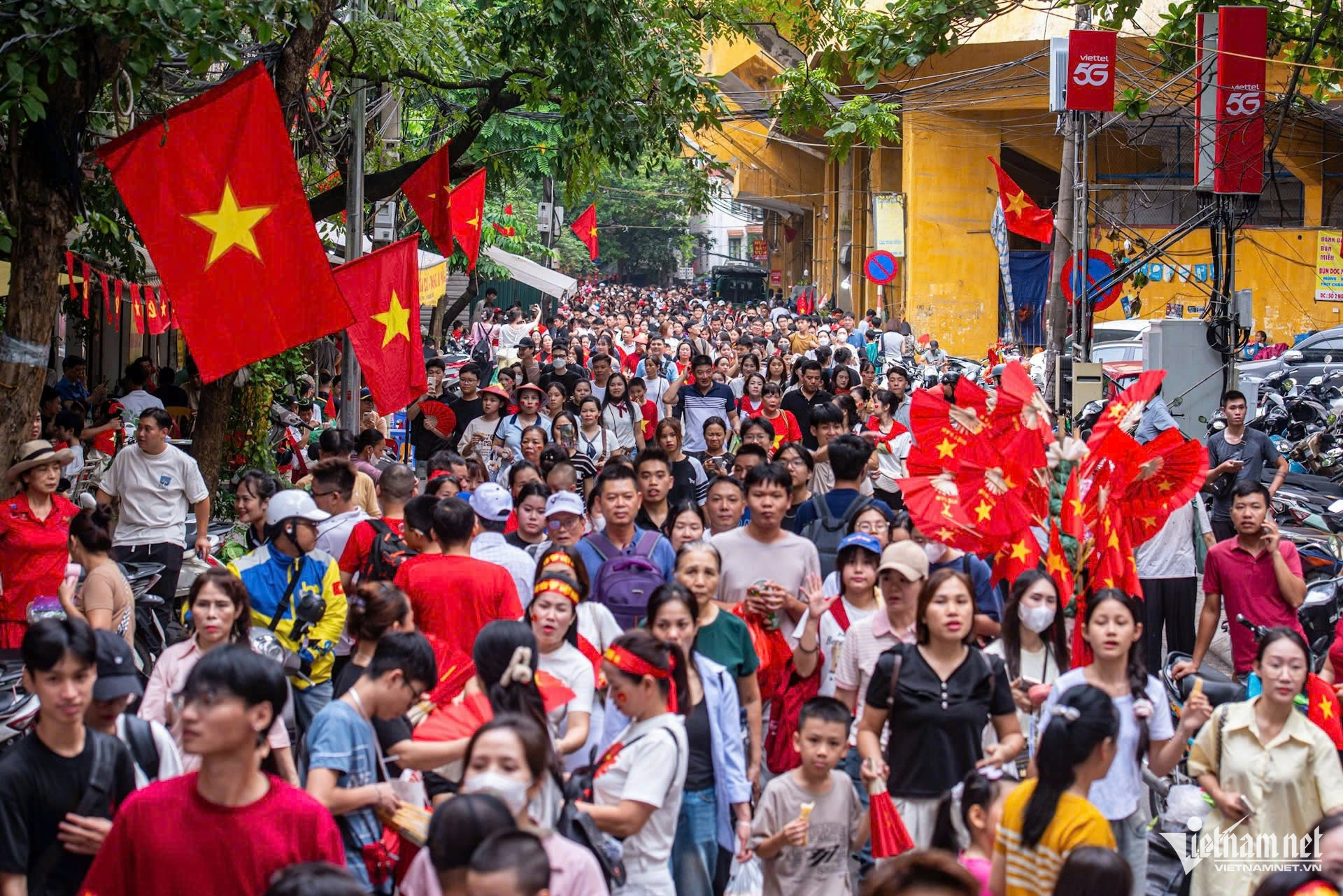
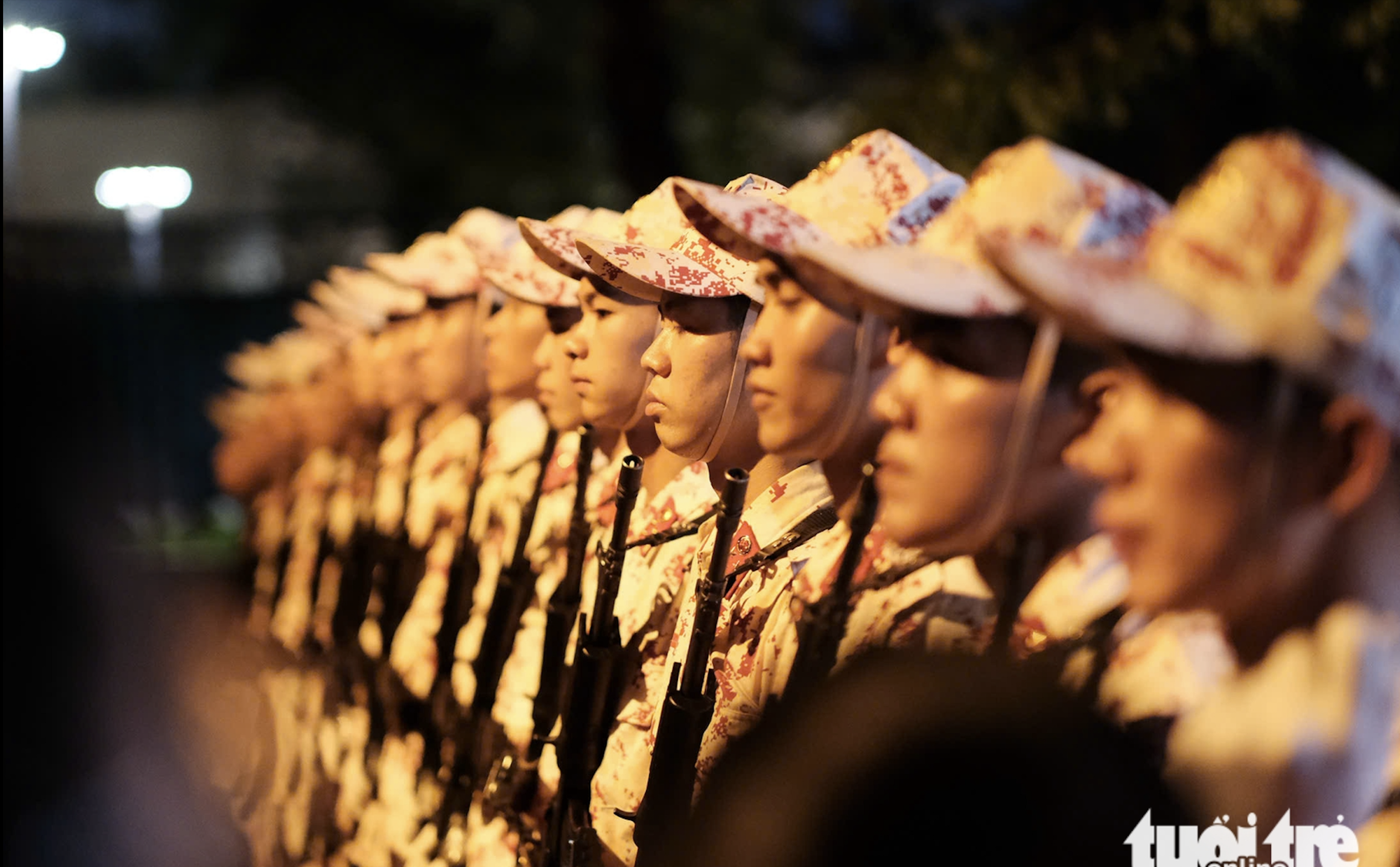
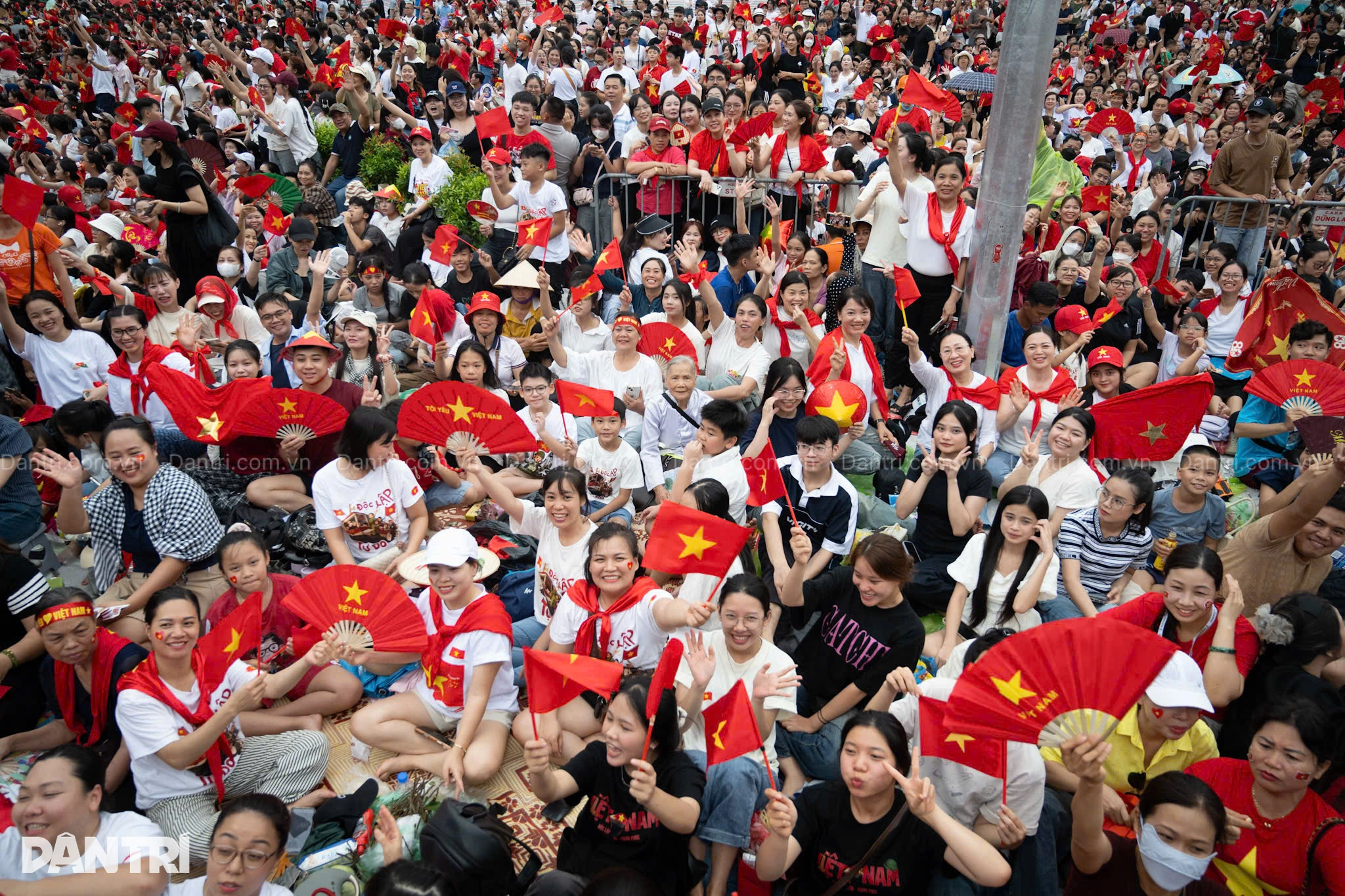
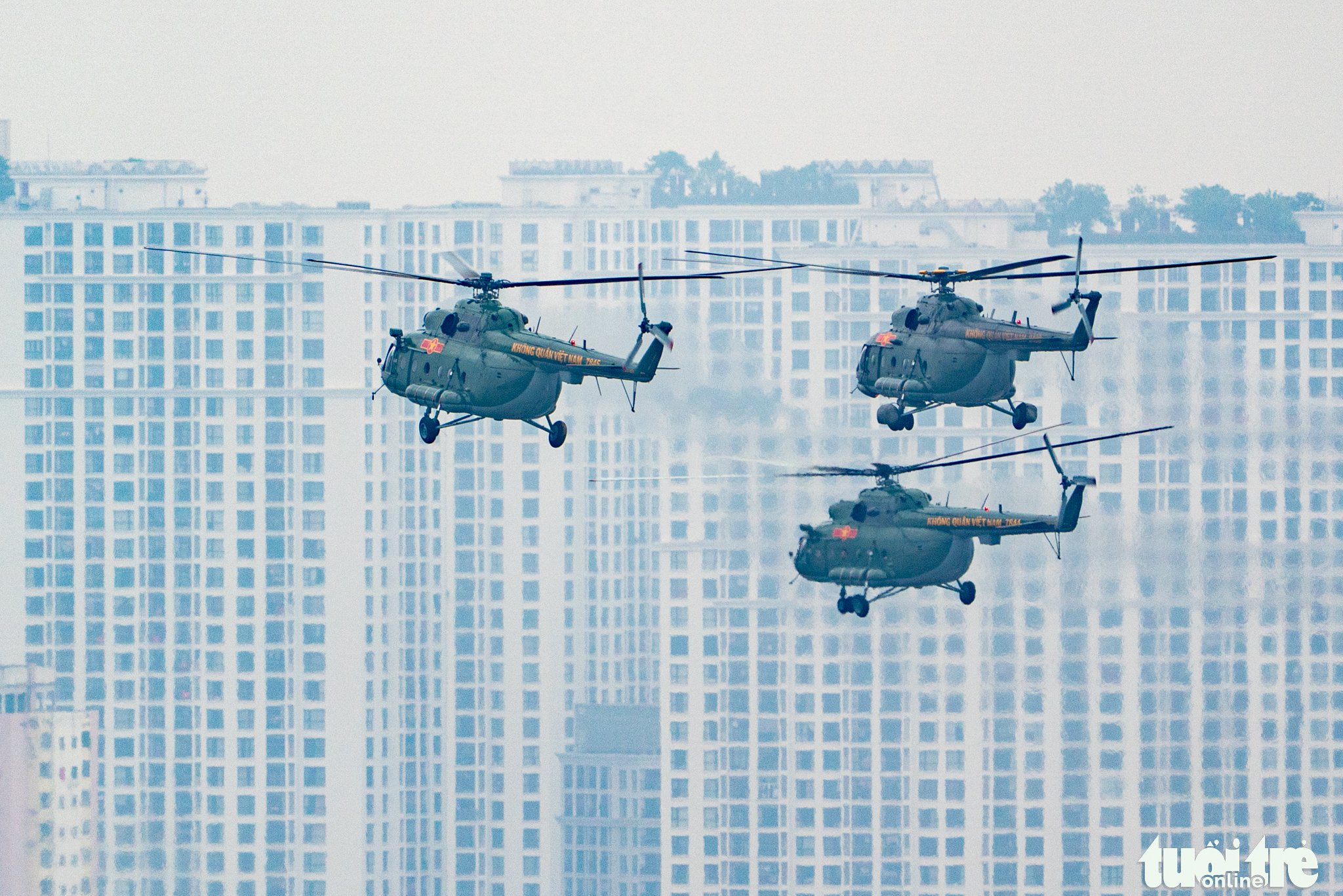
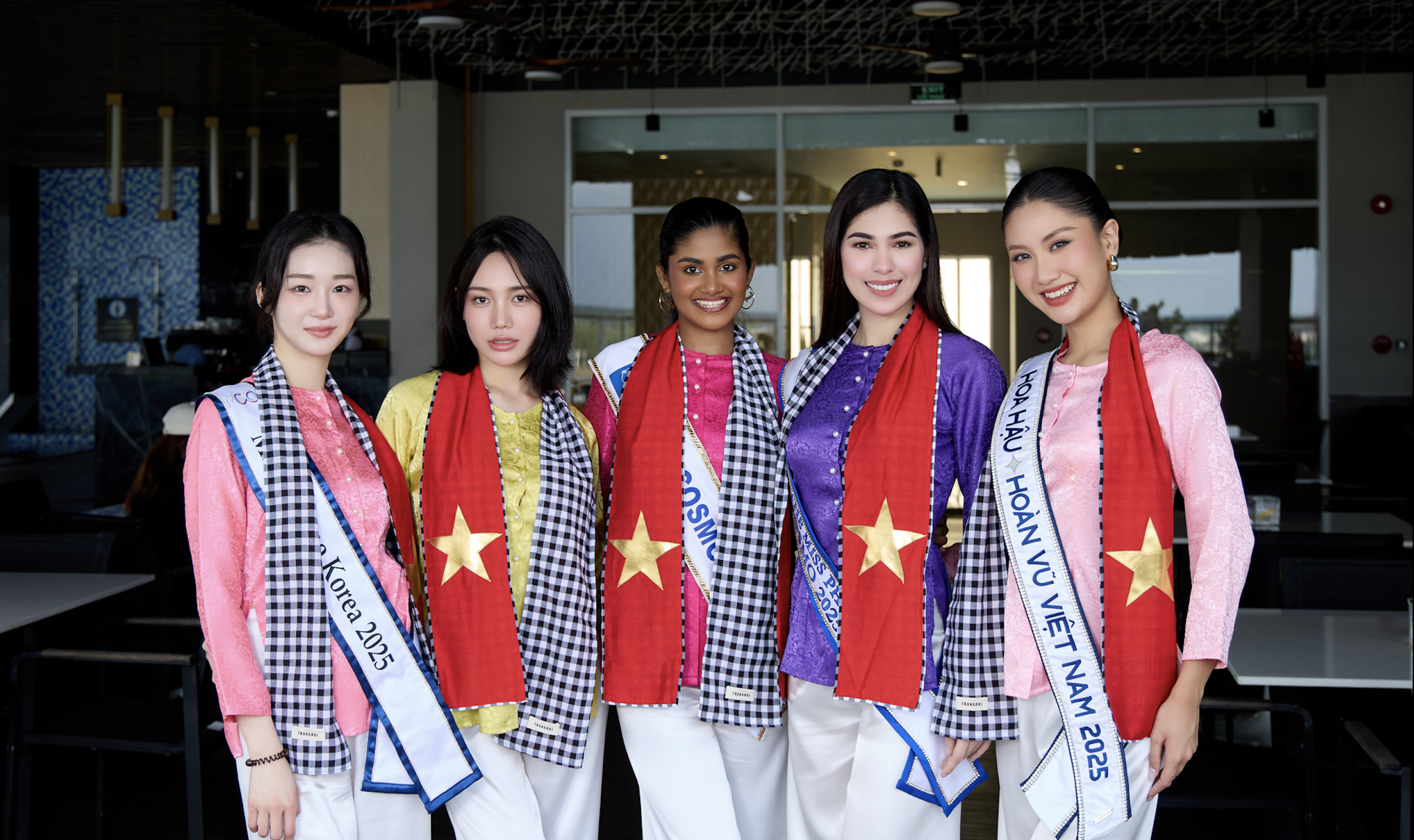
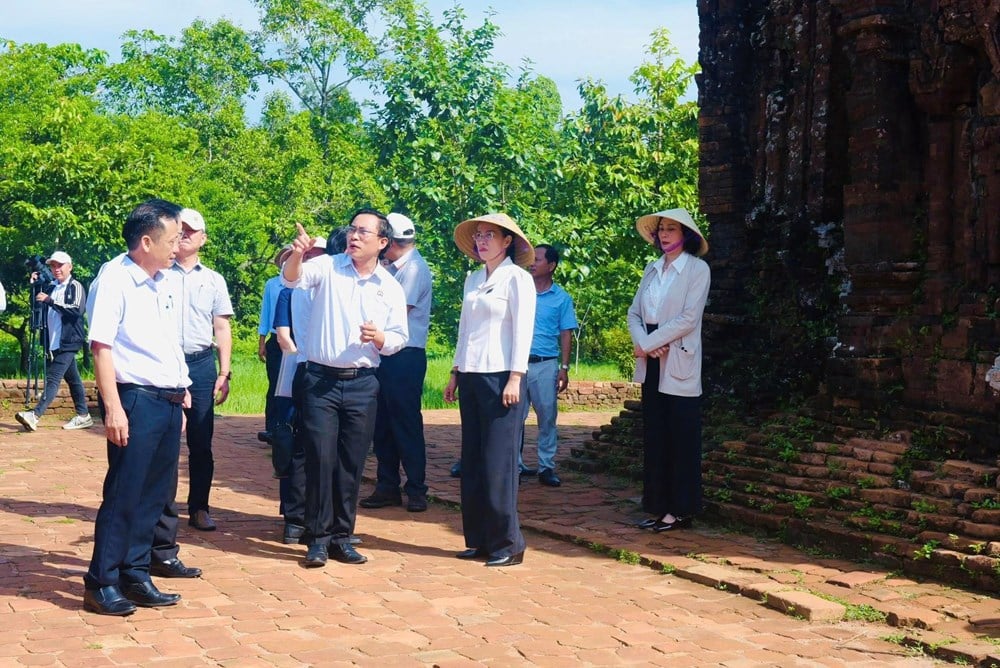

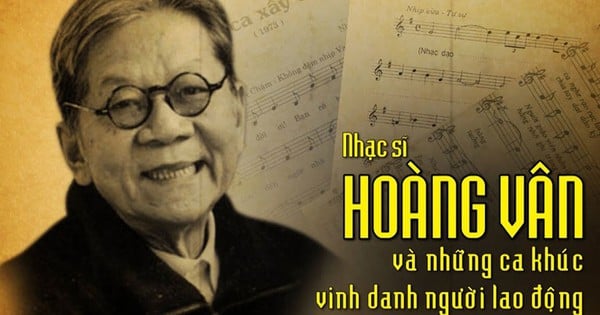

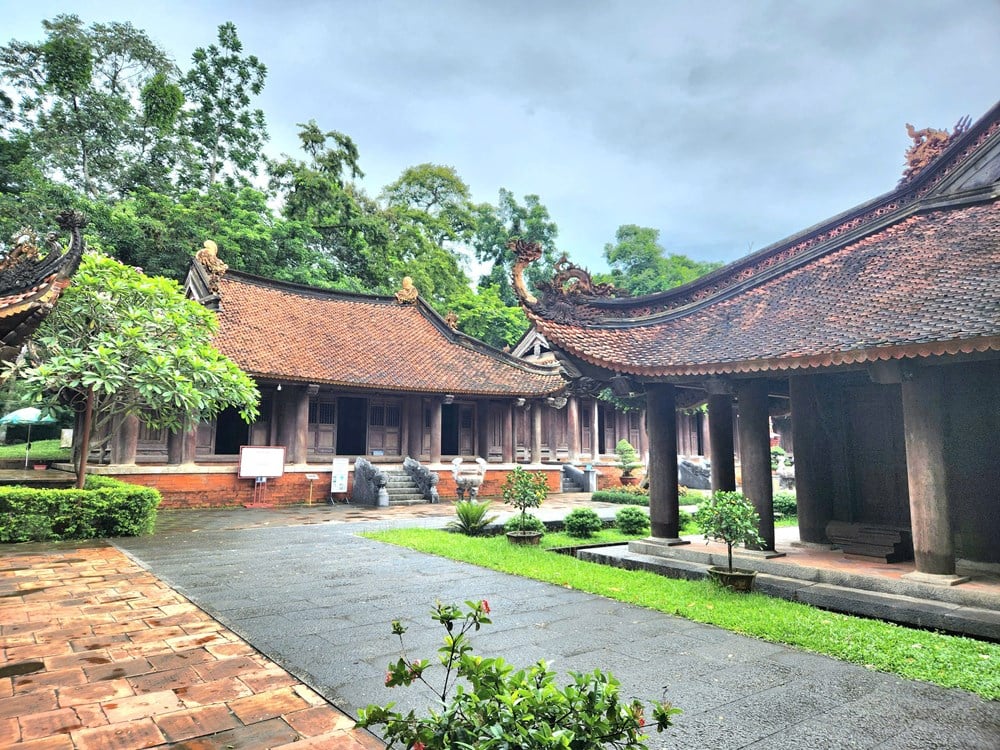
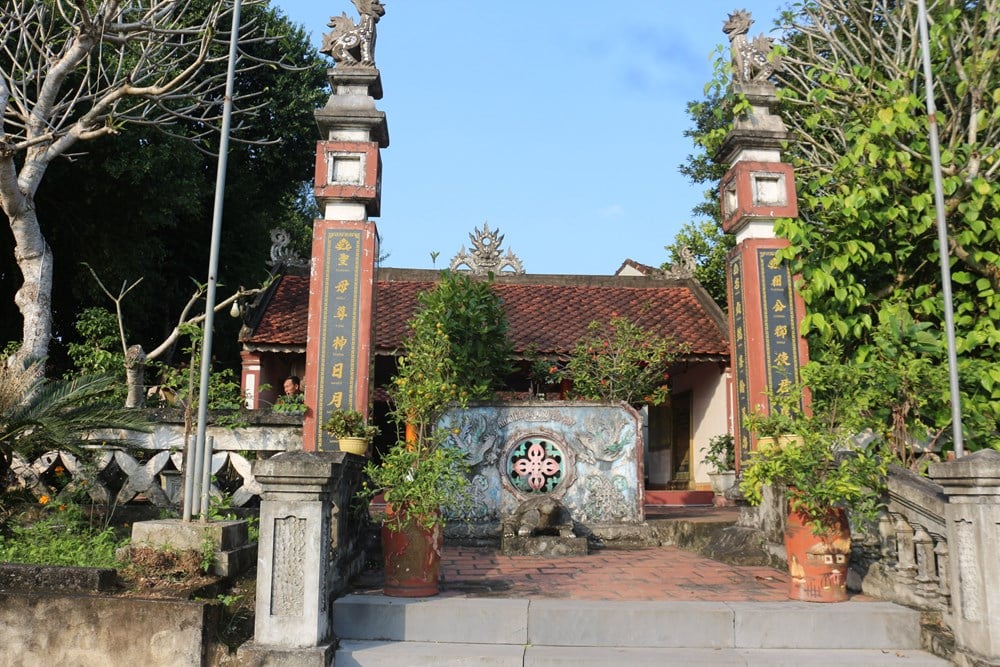
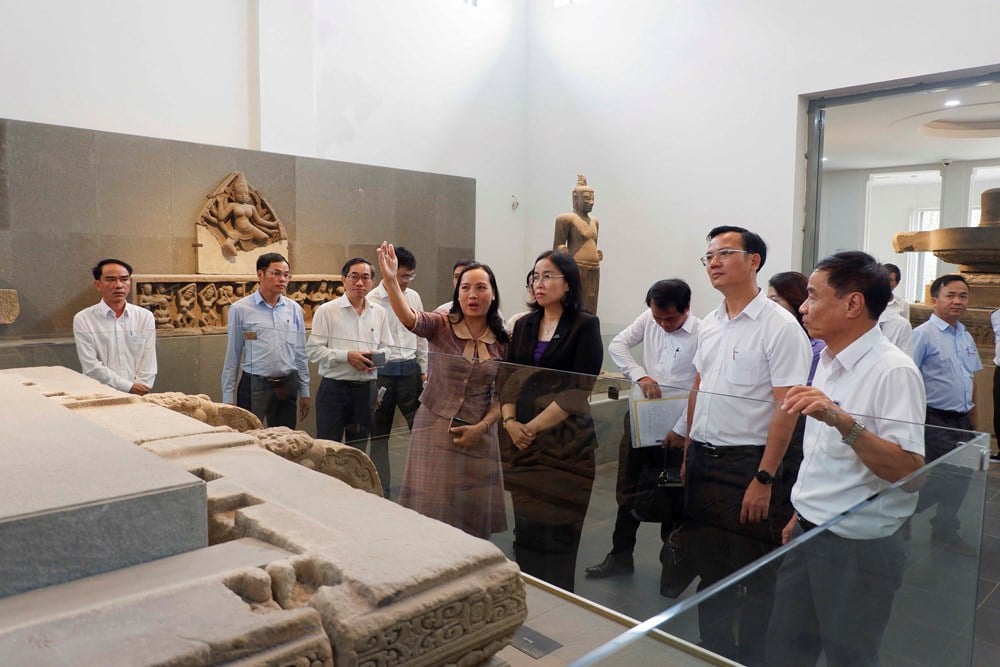
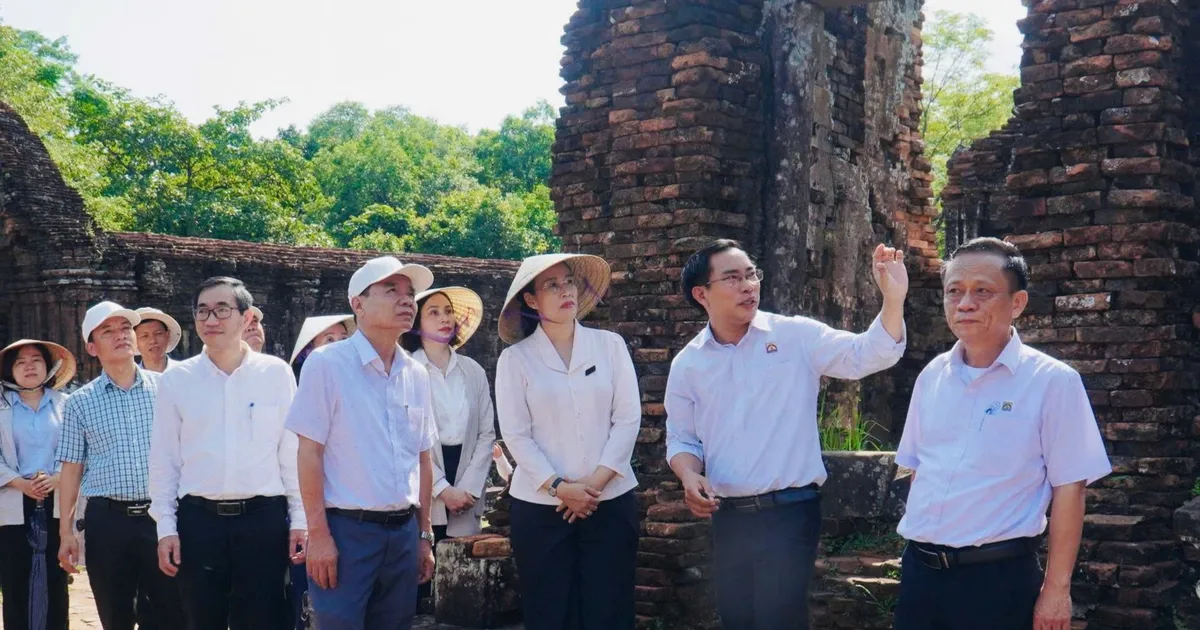

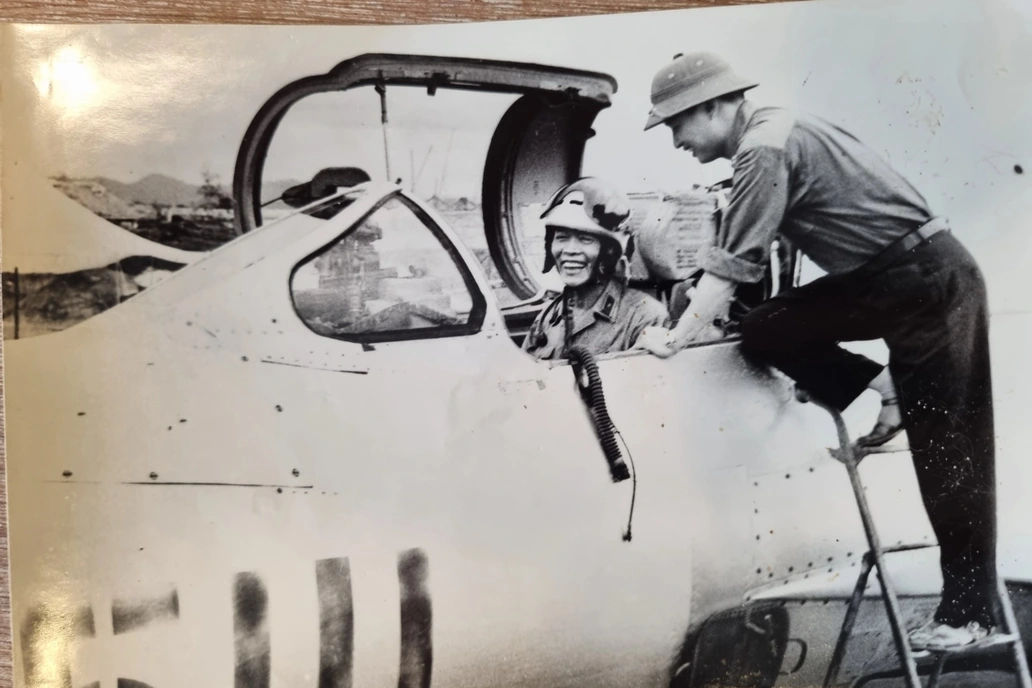

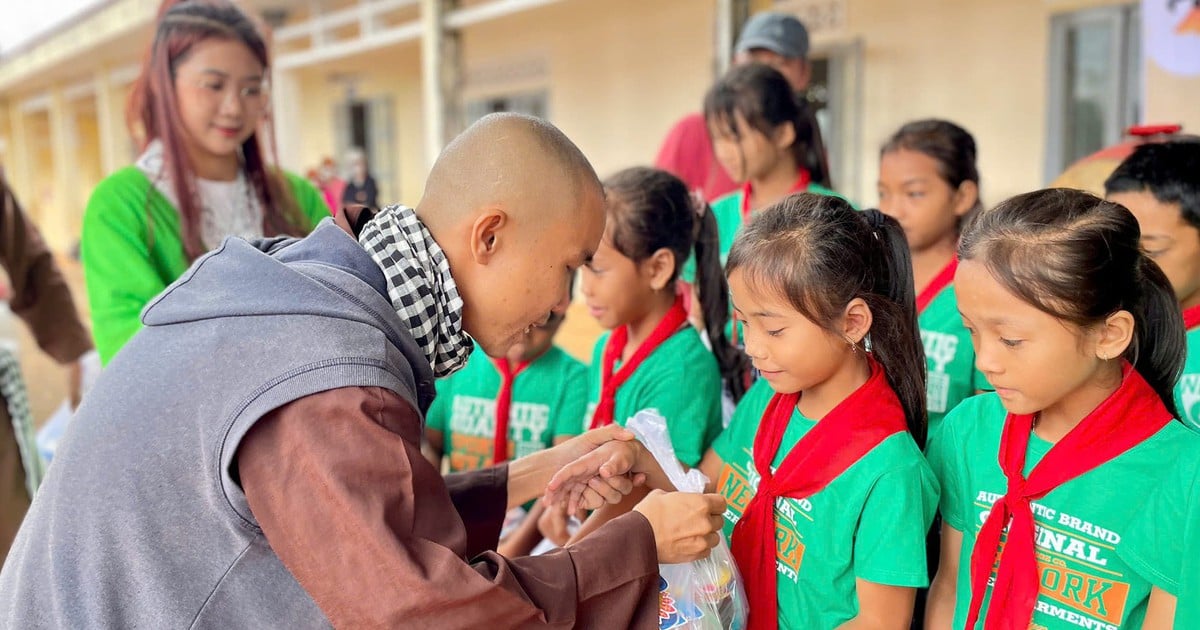




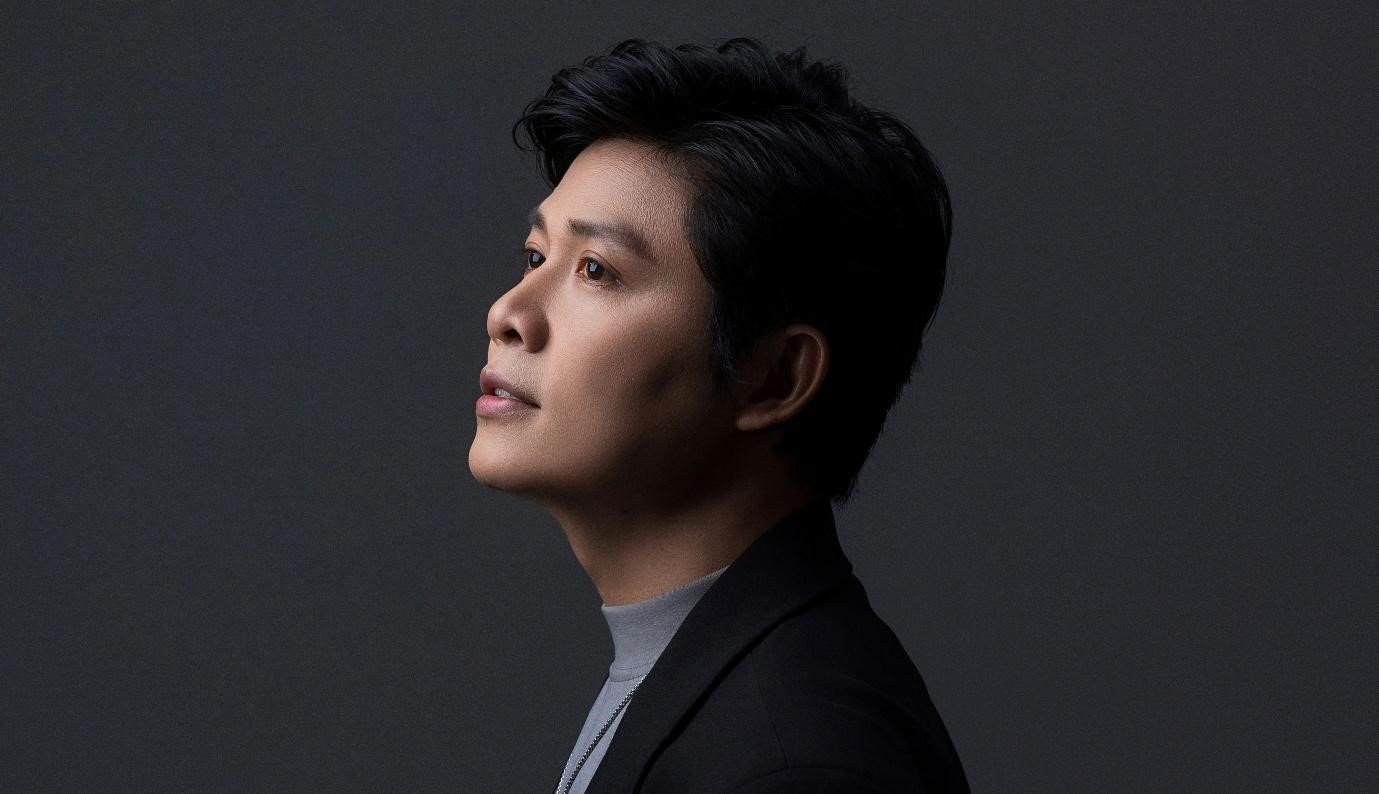

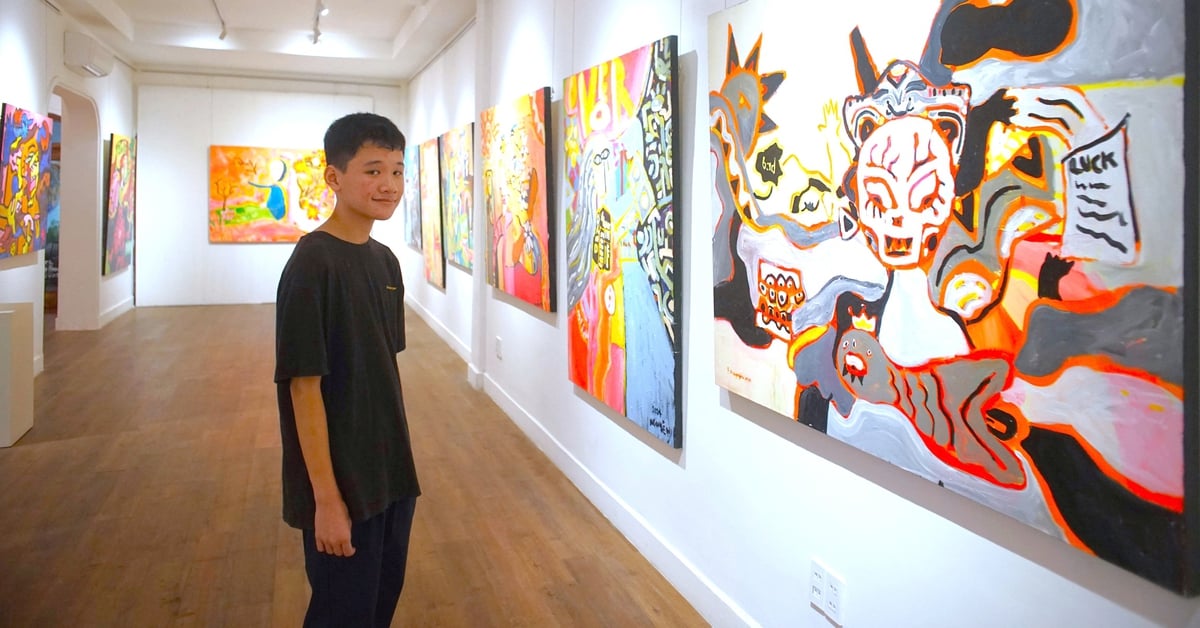




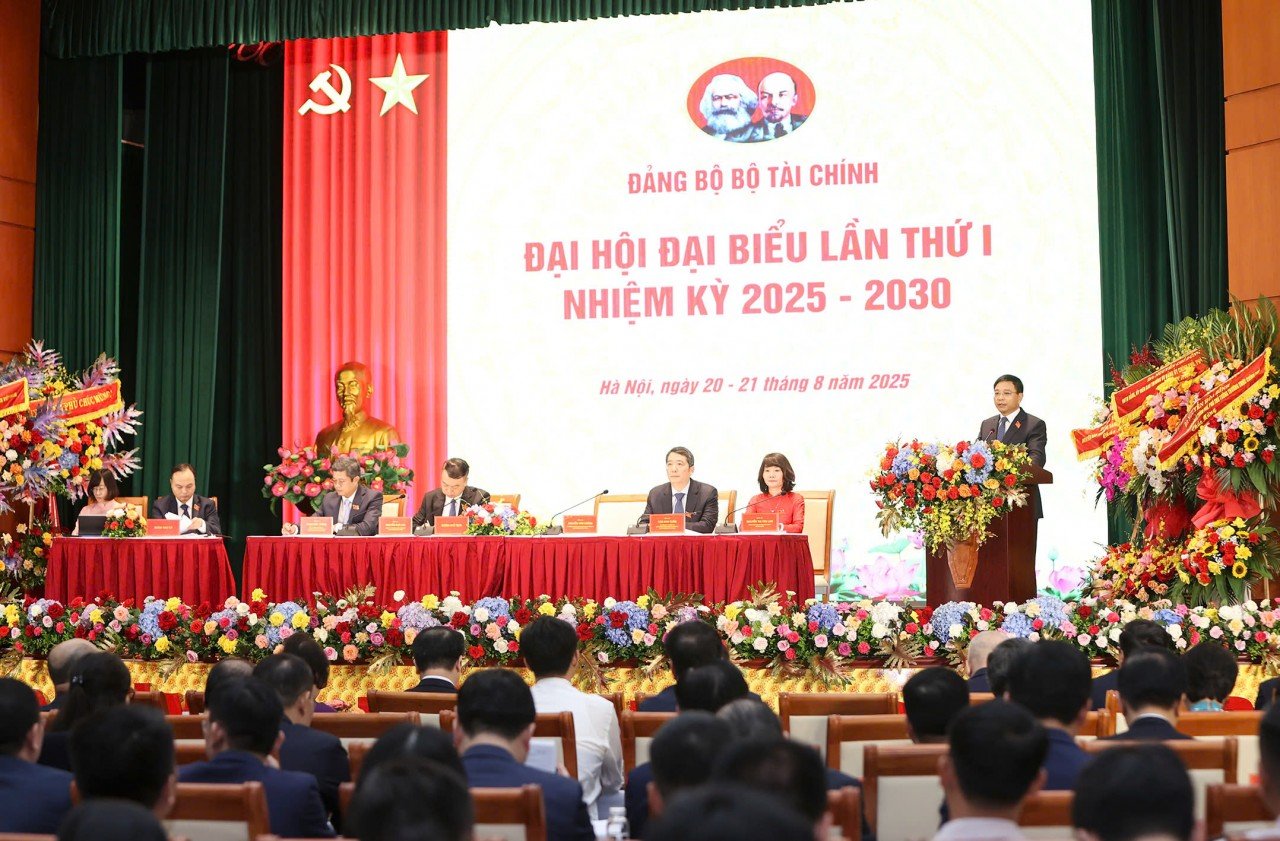
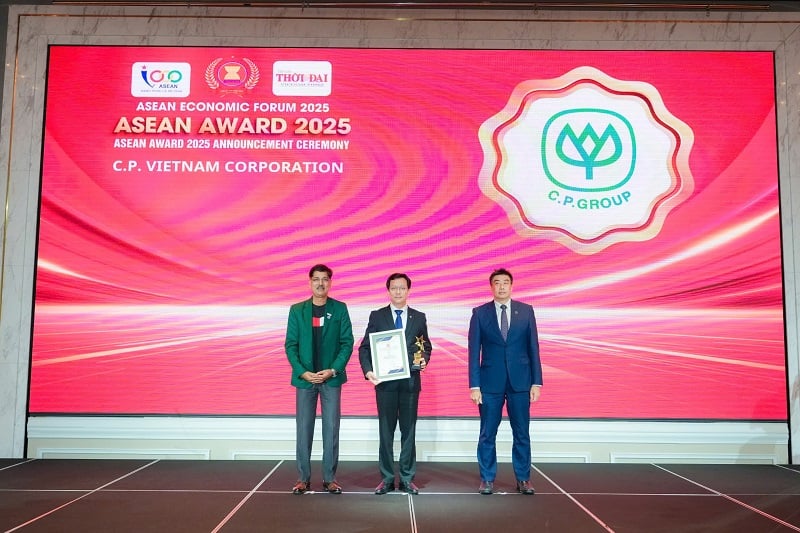

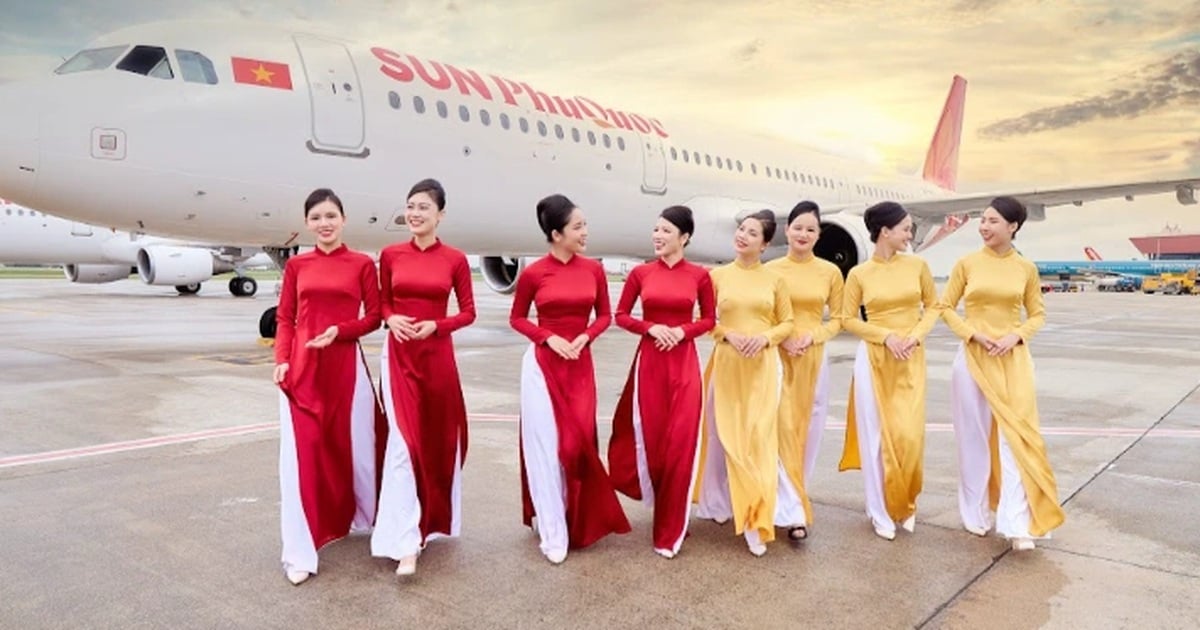
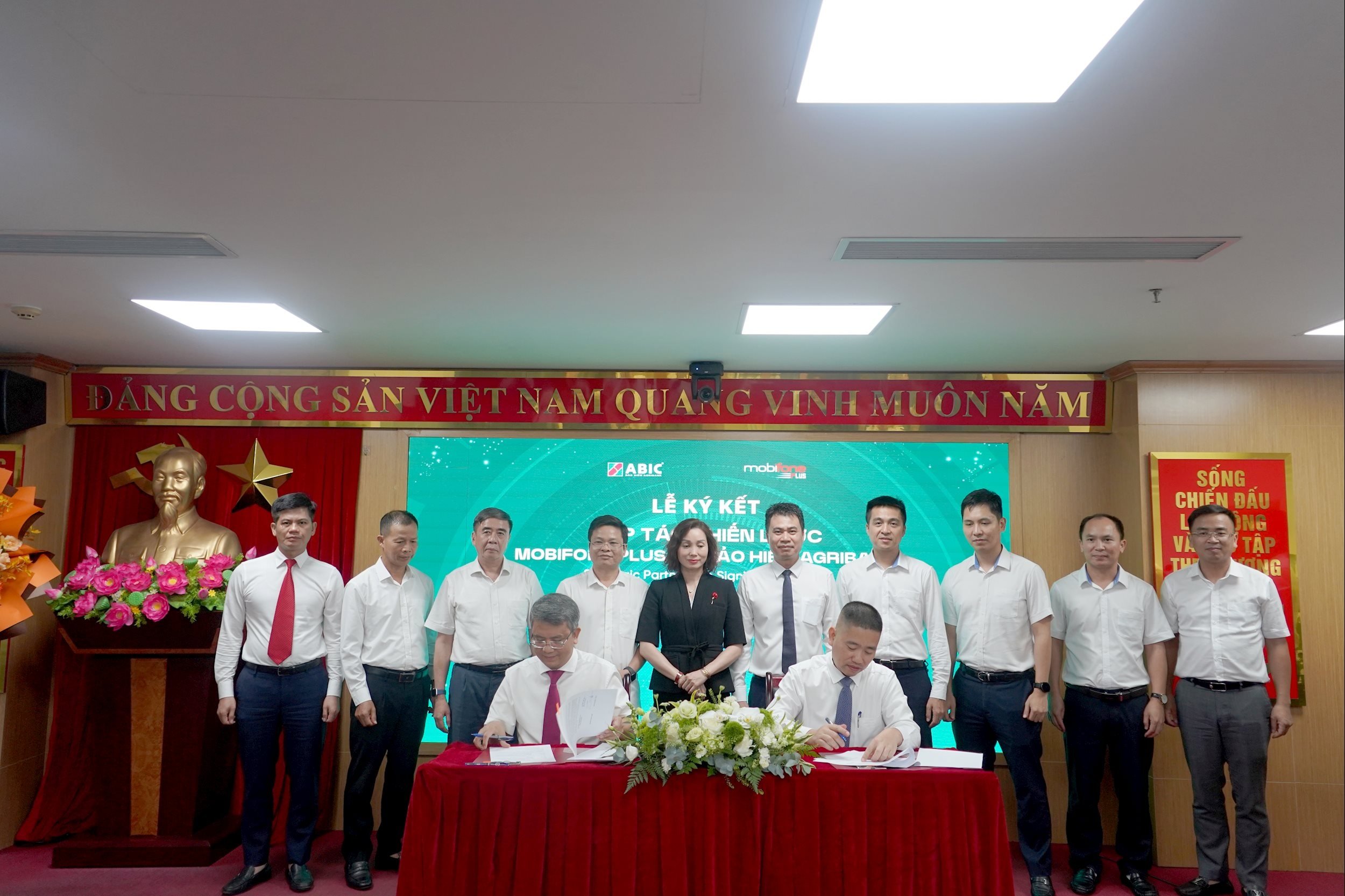

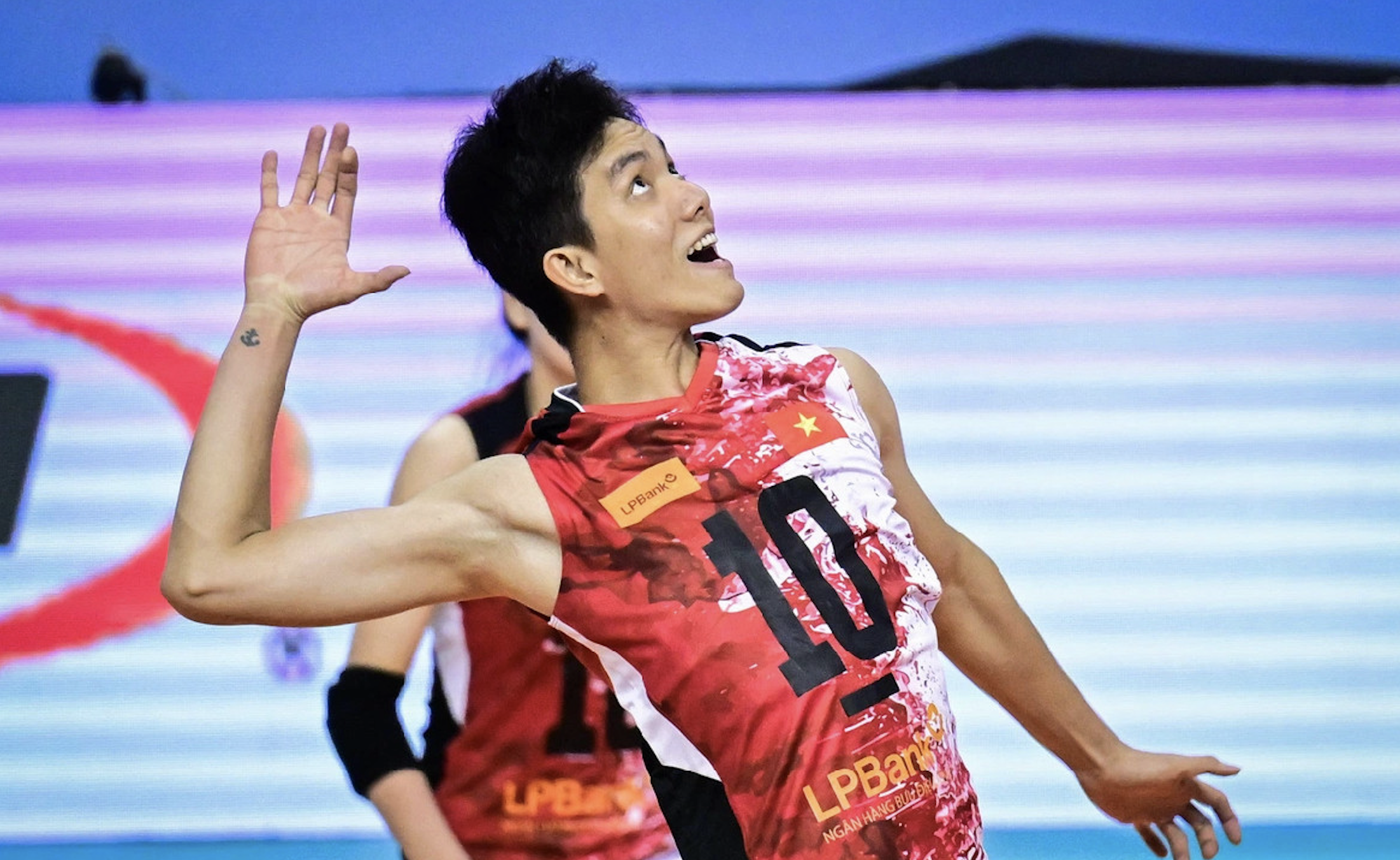
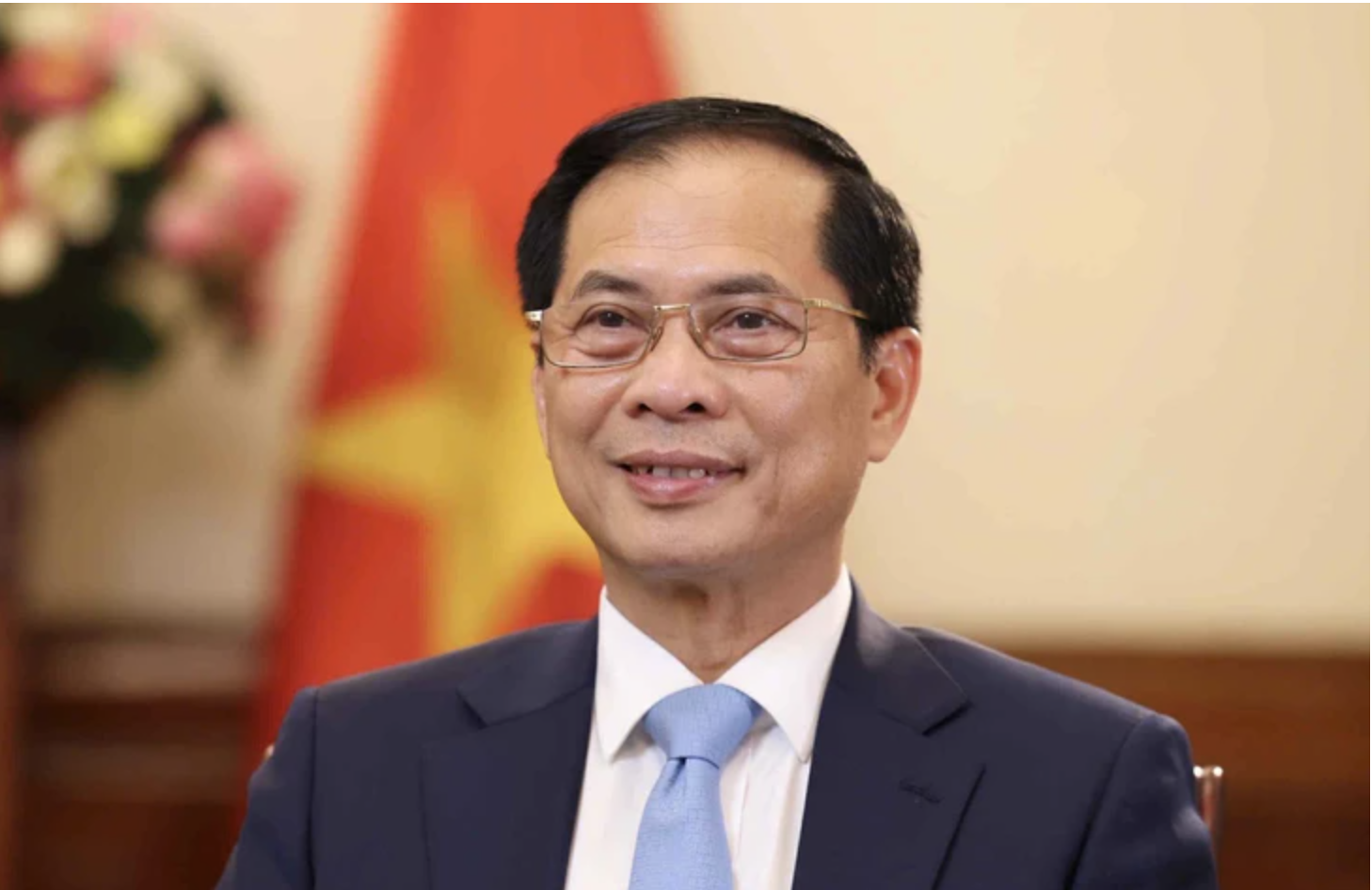
![[Photo] Politburo works with the Standing Committee of Hanoi Party Committee and Ho Chi Minh City Party Committee](https://vstatic.vietnam.vn/vietnam/resource/IMAGE/2025/8/21/4f3460337a6045e7847d50d38704355d)

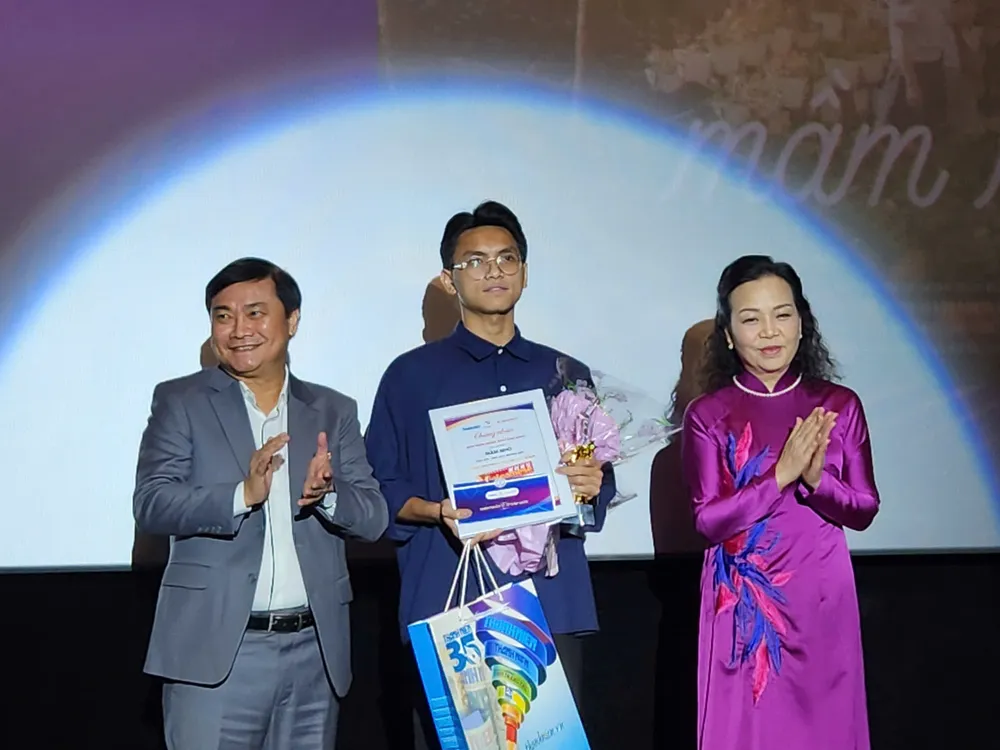
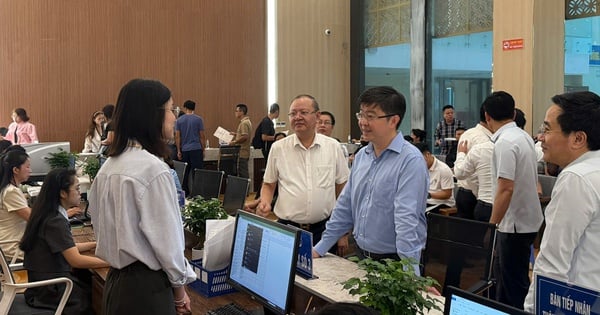

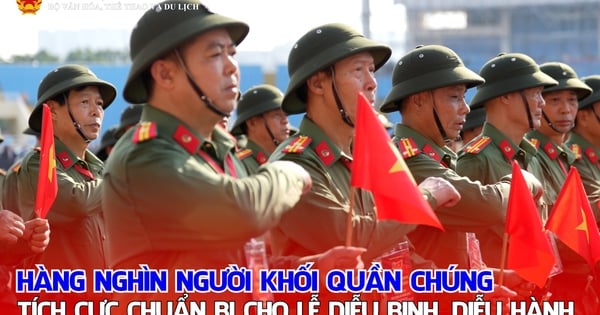


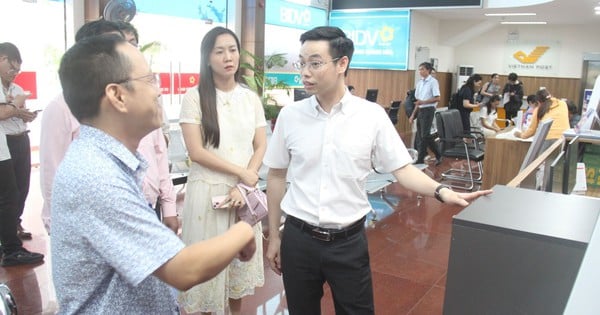
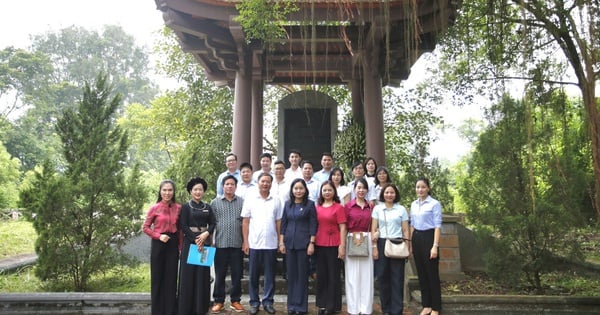
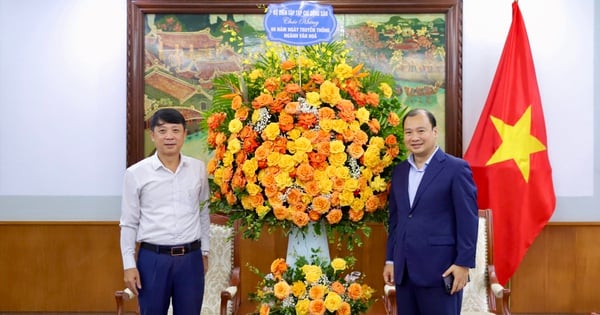







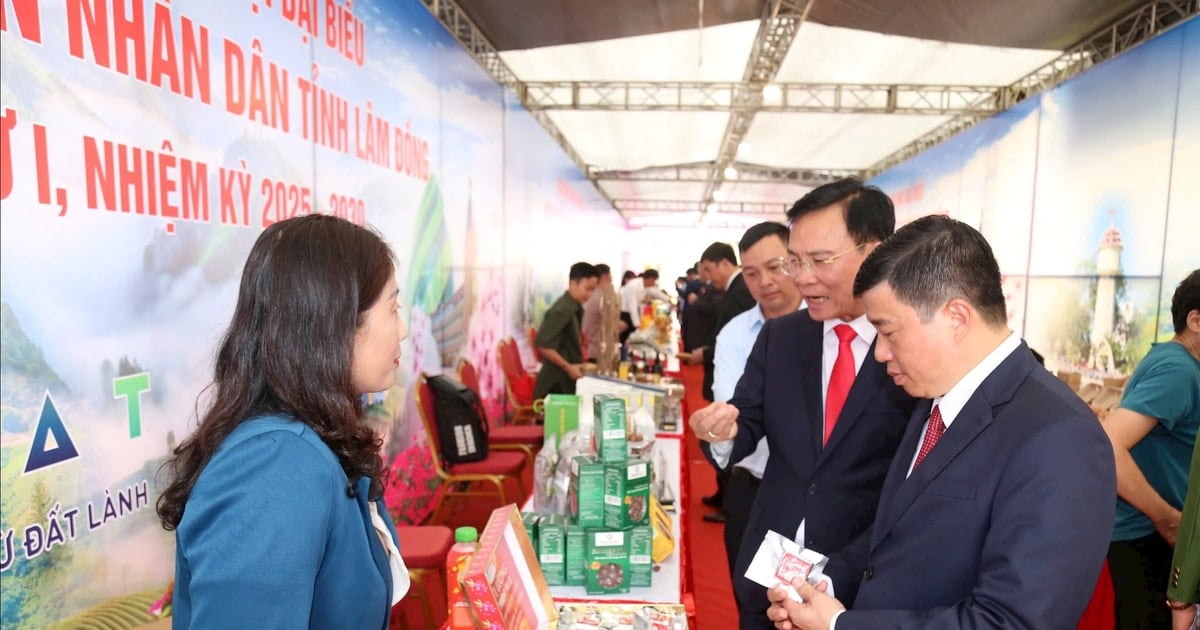

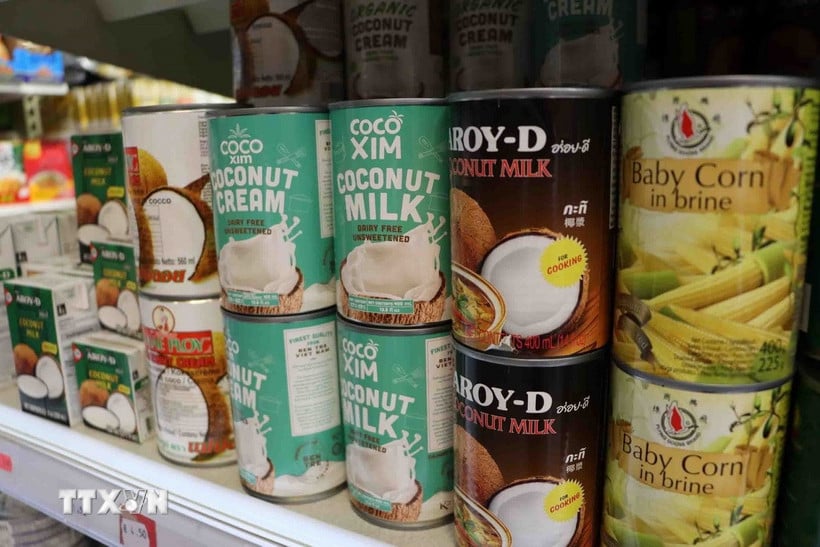

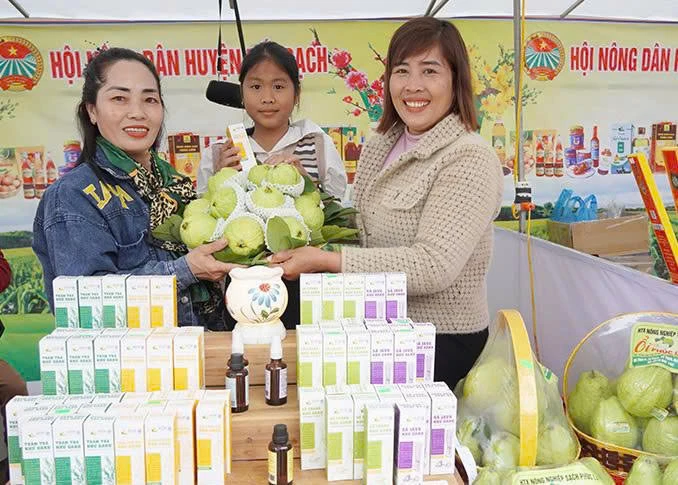
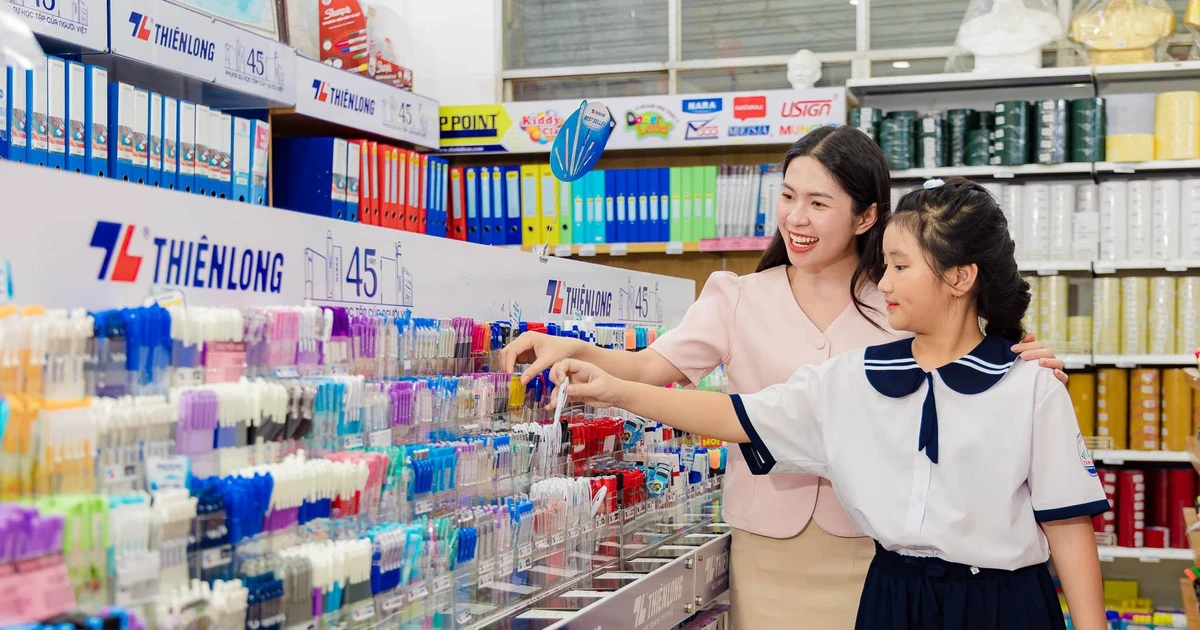

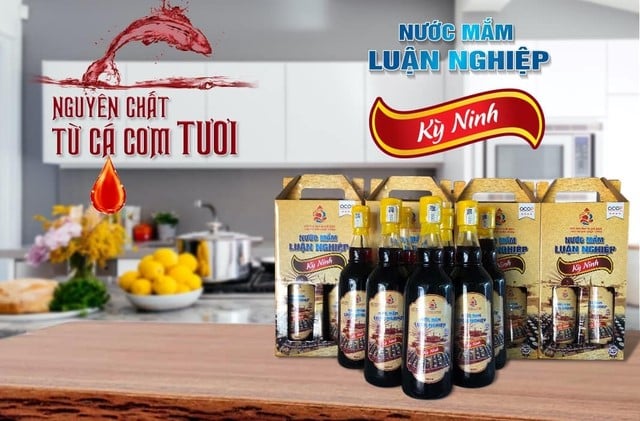

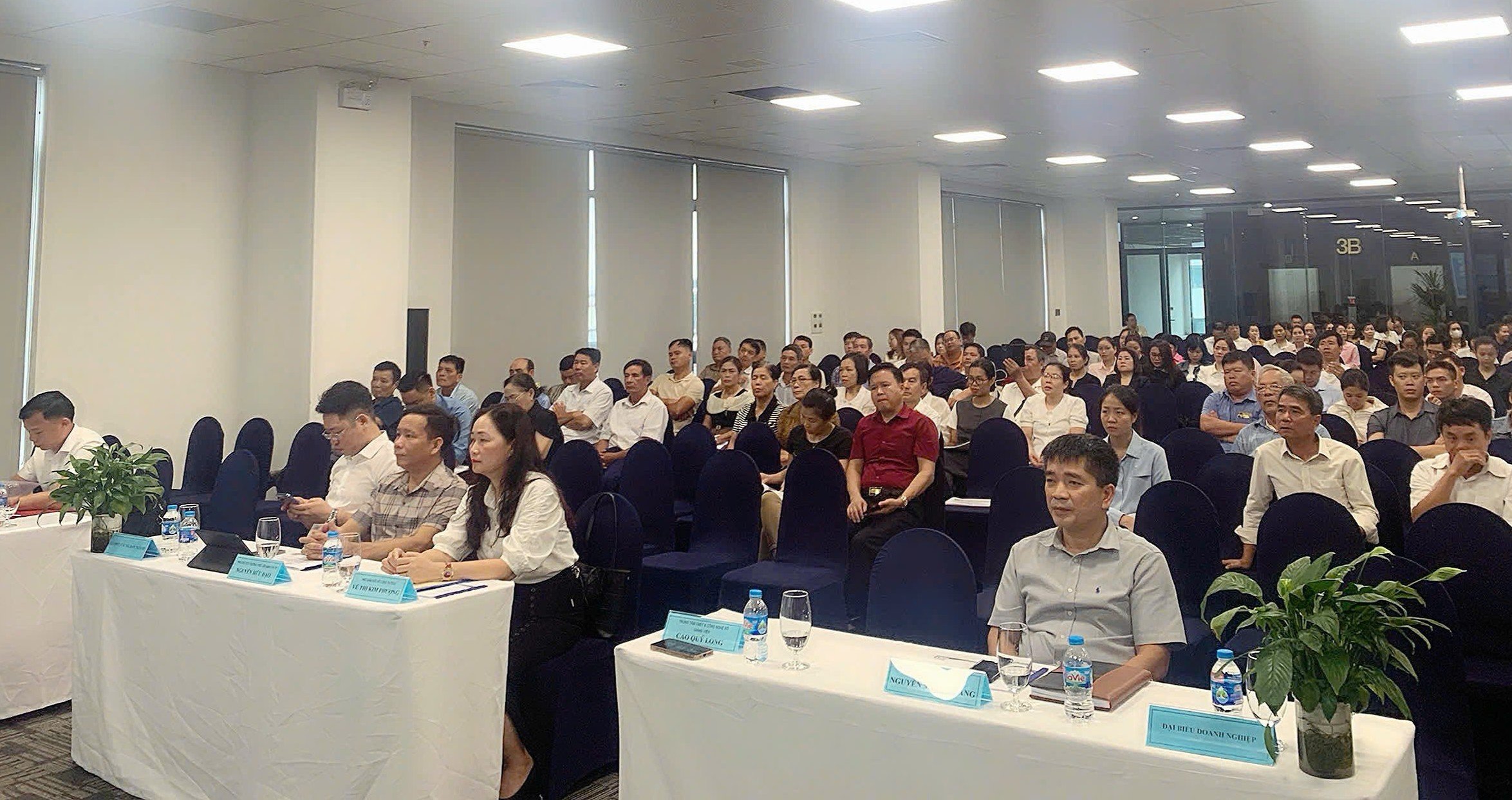






Comment (0)